Zagreb Advent Gems: Dagmar Meneghello's Art Collection
December 12, 2022 - The famous Croatian art collector exhibited part of her collection in her apartment at Krležin Gvozd in Zagreb. Every Friday and Saturday from 4 to 7 p.m. Dagmar Meneghello opens her home to all visitors who appreciate art.
Zagreb Advent, as they say at Večernji, received another must-visit cultural stop. The location is a private apartment at Krležin Gvozd 23 (on the second floor of which the Croatian author Miroslav Krleža lived until his death). The famous art collector Dagmar Meneghello returned to Zagreb after almost six decades of living in Palmižana on Hvar. She brought along the works of Zagreb painters that are part of her art collection. Following the theme of Advent and the joy that comes with it, she organised an Advent exhibition in her apartment that showcases the works of Šutej, Friščić, Eterović, and for the first time in Zagreb, Ivo Ćorković.

The exhibition can be viewed every Friday and Saturday from 4 to 7 p.m. during Dagmar’s open house days. In Zagreb, the movement of collectors opening their apartments to the public to show off their art is quite a novelty. Dagmar Meneghello learned of such a lifestyle in Germany and now finds it to be normal and necessary.
Dagmar Meneghello's art collection has about 3,000 works. It was collected over half a century, during which hundreds of artists created and exhibited at Dagmar’s home in Palmižana. Her Palmižana home was often the first contact of foreign visitors, mostly sailors, with Croatian culture and art. For fifty years, she invited artists to a tiny island, a gallery at the end of the world.

The works include numerous sculptors, from the great Kosta Angeli Radovani, Goldoni, Riba Lončarić, Kuzma Kovačić, Peruško Bogdanić to Petar Dolić and Petar Hranuelli, Alana Kajfeš, Vatroslav Kuliš, Bana Milenković, Toni Franović, Boris Demur, and Željko Jerman, to younger generations such as Paulina Jazvić, Koraljka Kovač, Nina Ivezić, Tisja Kljaković Braić. These days, numerous museums and institutions borrow and exhibit the collection.
Dagmar started her art journey at an early age while working as a journalist in Zagreb. Love took her to Palmižana, and now she started a foundation and is working to ensure that her luxurious collection gets a new permanent home.
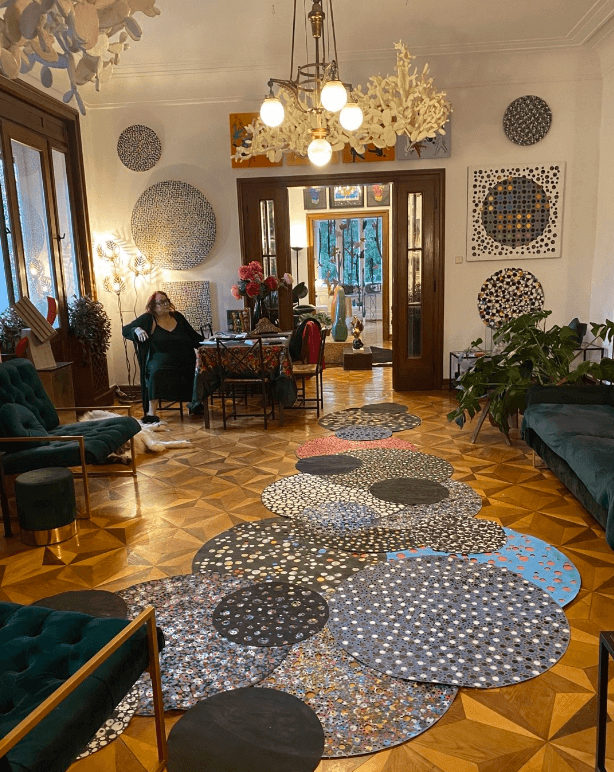
For more, make sure to check out our dedicated Travel section.
4th, Royal HeadOnEast Festival to Showcase Best of Slavonia and Baranja
September 11, 2022 - Although the east of Croatia lives and breathes hedonism all year round, there is a moment every year when it shines really, really brightly. For the fourth year in a row, during the two-day festival of hedonism, the Osijek-Baranja County Tourist Board will offer to the world the best of Slavonia and Baranja in one place. On September 30 and October 1, HeadOnEast is taking place in Osijek!
As proclaimed by the County Tourist Board, Hedonism is in the east!
The three-day entertainment event, aptly named "HeadOnEast" or simply - Hedonist, invites all pleasure-seekers to head east. You will enjoy, as befits true hedonists, the best that Slavonija and Baranja have to offer.
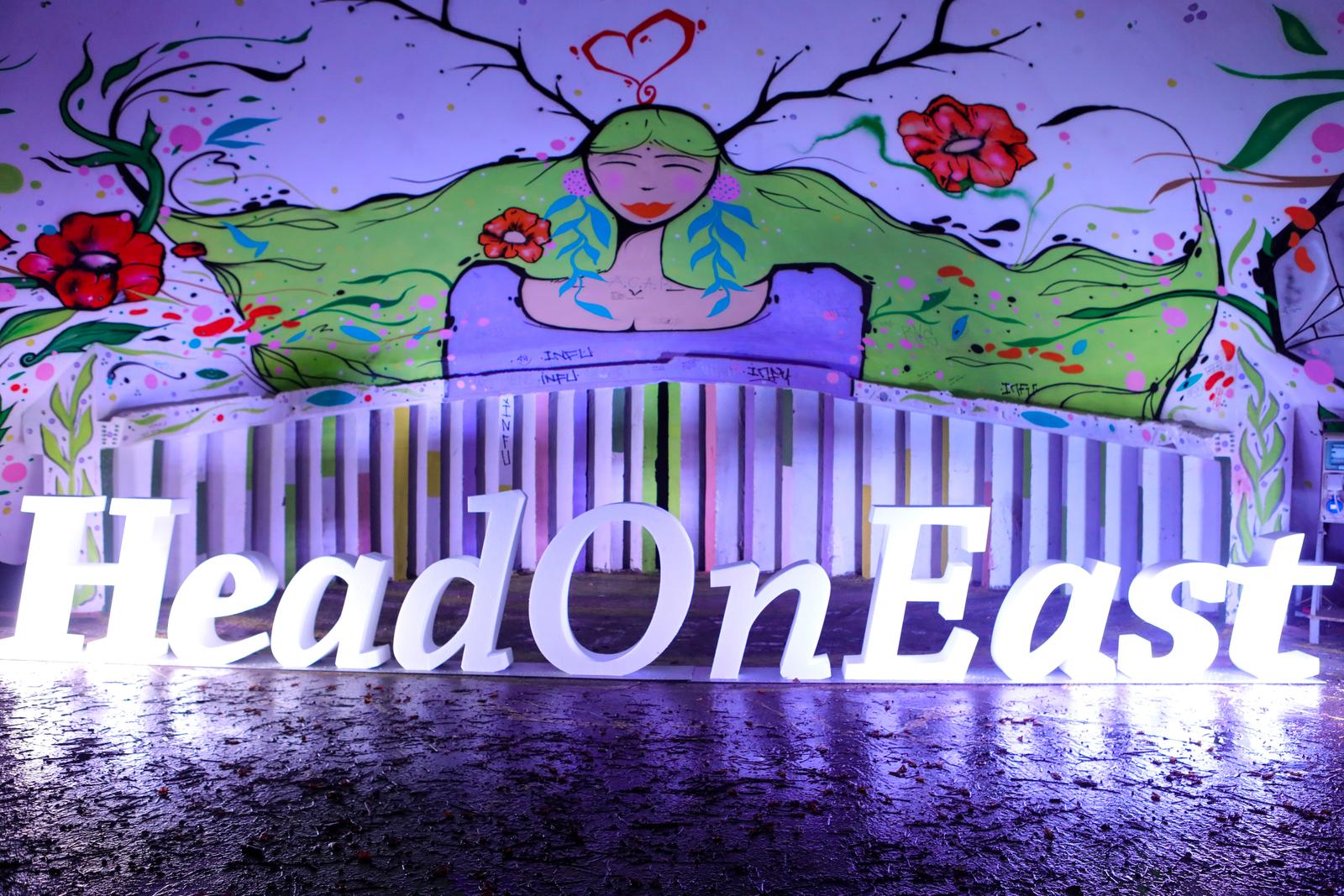
Dubravka Petric / Pixsell
During those days, the old Fortress in Osijek amazes with numerous themed passages and streets, unique content and imaginative activities, along with the smells of the region's best gastronomic delicacies. All this rests on the presentation of the rich offer of Slavonia and Baranja - from well-known events to a diverse cultural offer. Discover how to live hedonism to the fullest and be inspired by the flavours, colours and beauty of this region.
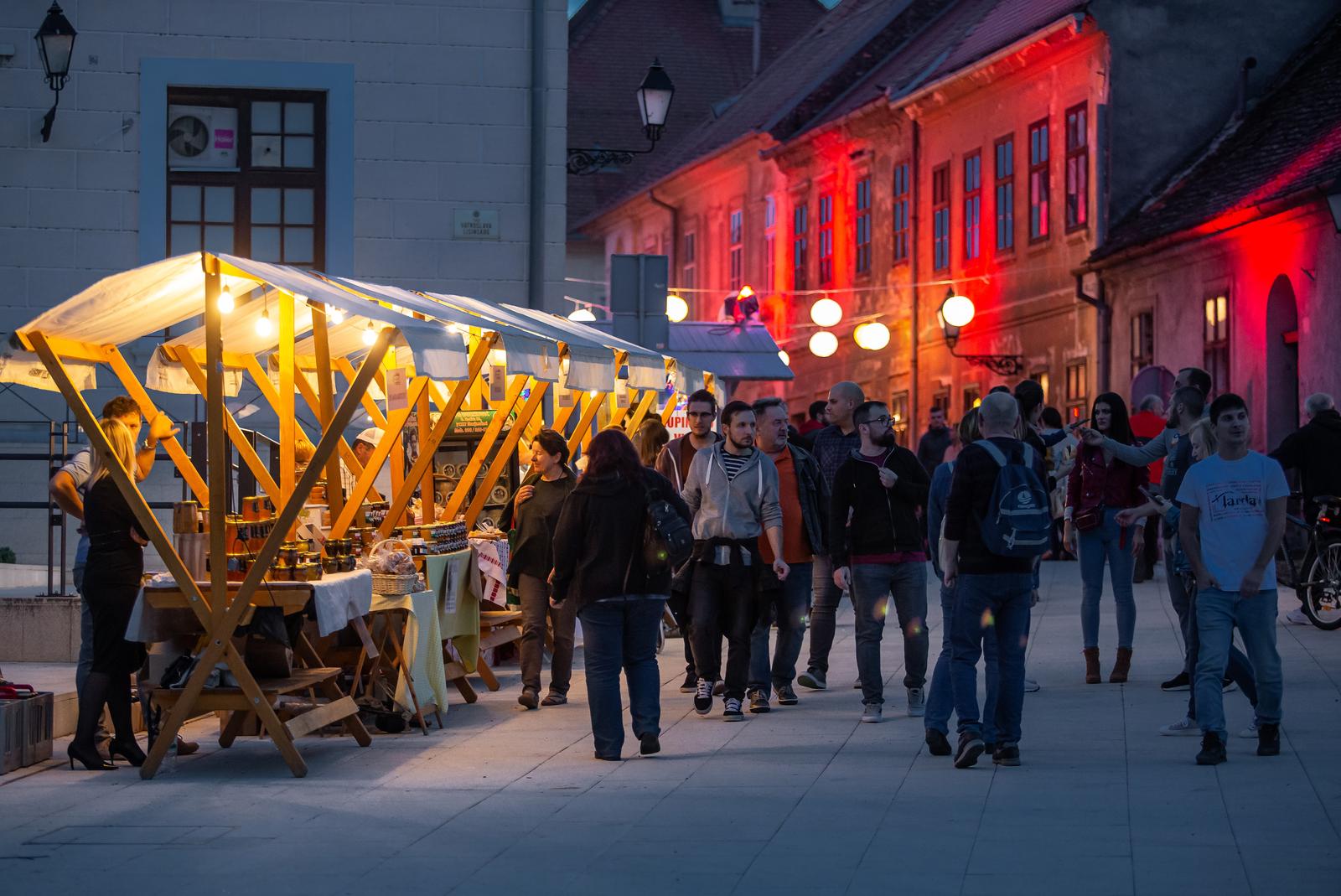
Davor Javorovic / Pixsell
All clear! Hedonists, there is no surrender - except surrender to pleasure.
This year, it carries the "royal" title because the main program will take place in the parks of King Petar Krešimir IV and King Tomislav. In addition to the art of light, the mandatory parts of this year's HeadOnEast traditionally include other types of art, wine, beer and all kinds of gastronomic delicacies. An excellent music line-up will be in charge of spicing it all up. This year's list of hedonists includes Fluentes, Gelato Sisters, Z++, Massimo, Daleka Obala.
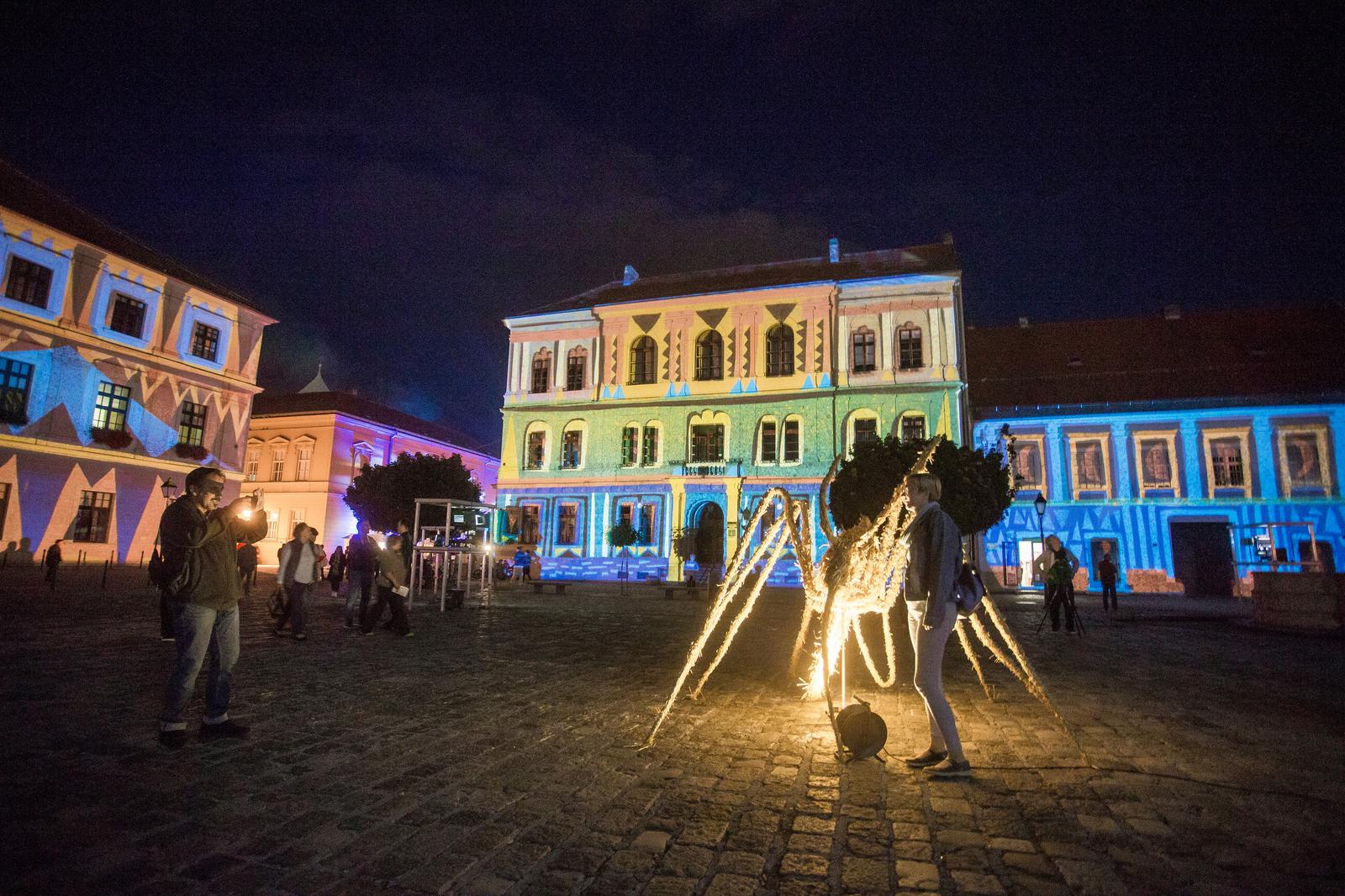
Davor Javorovic / Pixsell
Up to date information about the event and the program can be followed in detail at visitslavoniabaranja.com, Facebook page Visit Slavonija Baranja and Instagram profile visit.slavonija.baranja.
For more, make sure to check out our dedicated Lifestyle section.
Darija Walter of PLANTaža on Art Project Urban Intervention Osijek
August 17, 2022 - A wonderful artistic intervention has just dawned in the city of Osijek. It put the spotlight on the historical beauty of cities. A tram stop that dates to 1926 was refurbished by the famous street artist Lonac, under the Urban Intervention project headed by Darija Walter.
Darija is a woman changing things at the local level, to stimulate change on a global level. In recent years, life in Croatia has focused more and more on the capital, while the rest remains neglected, uninhabited, and without events and plans. Darija operates through the association PLANTaža. She also works on a series of projects that truly change Osijek, and not only Osijek but contribute to the entire community. Journal spoke with Daria about all the current and upcoming plans that, little by little, bring life to where it should have always been.
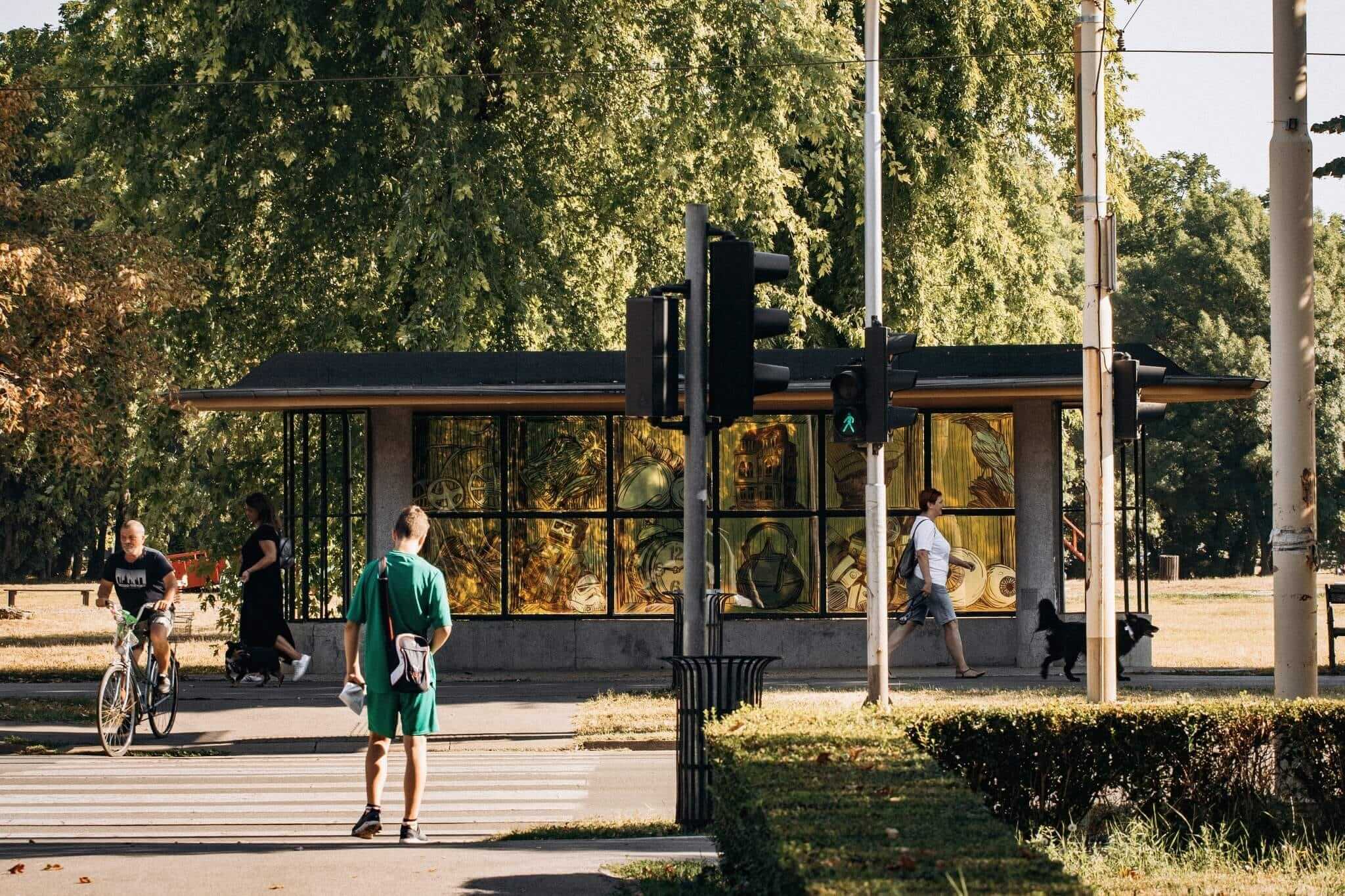
Darija Walter on her beginnings, art…
You have now been in the PLANTaža association for eight years, how do you see those years, compared to the time before you became part of it, how much has it changed your life?
I have been working with the PLANTaža Association since the very beginning of the association's work when an enthusiastic group of people gathered who wanted to start some new stories in Osijek. Today, eight years later, I realize how much the association has influenced my life. It gave me a new opportunity that I was not aware of before and thus determined my path. I have always known that I wanted to do work that has a direct impact on solving problems in the community, offers sustainable and meaningful solutions, and involves all age groups. It never crossed my mind that I would do that in the city I love so much. The city I wanted to leave eight years ago because I didn't see any prospects.
"It would be nice to write about Slavonia in an optimistic tone"
How much, in your opinion, does investment and contribution to a city, especially not the capital of Croatia, mean, on a larger level, while most investments are oriented specifically towards Zagreb or the south of the country?
Like any other area, the city of Osijek could use investment, especially in the field of creating new jobs. Although we do not stand side by side with the big companies, the association is an employer that, through EU funds, offers the opportunity for employment and first work experiences. We are not the only ones there. We cooperate with a whole range of associations that operate in Osijek and continue to develop their stories despite numerous obstacles. Croatia does not only consist of Zagreb. It is precisely for this reason that equal investment should be encouraged so that other parts of the country can also expect development.
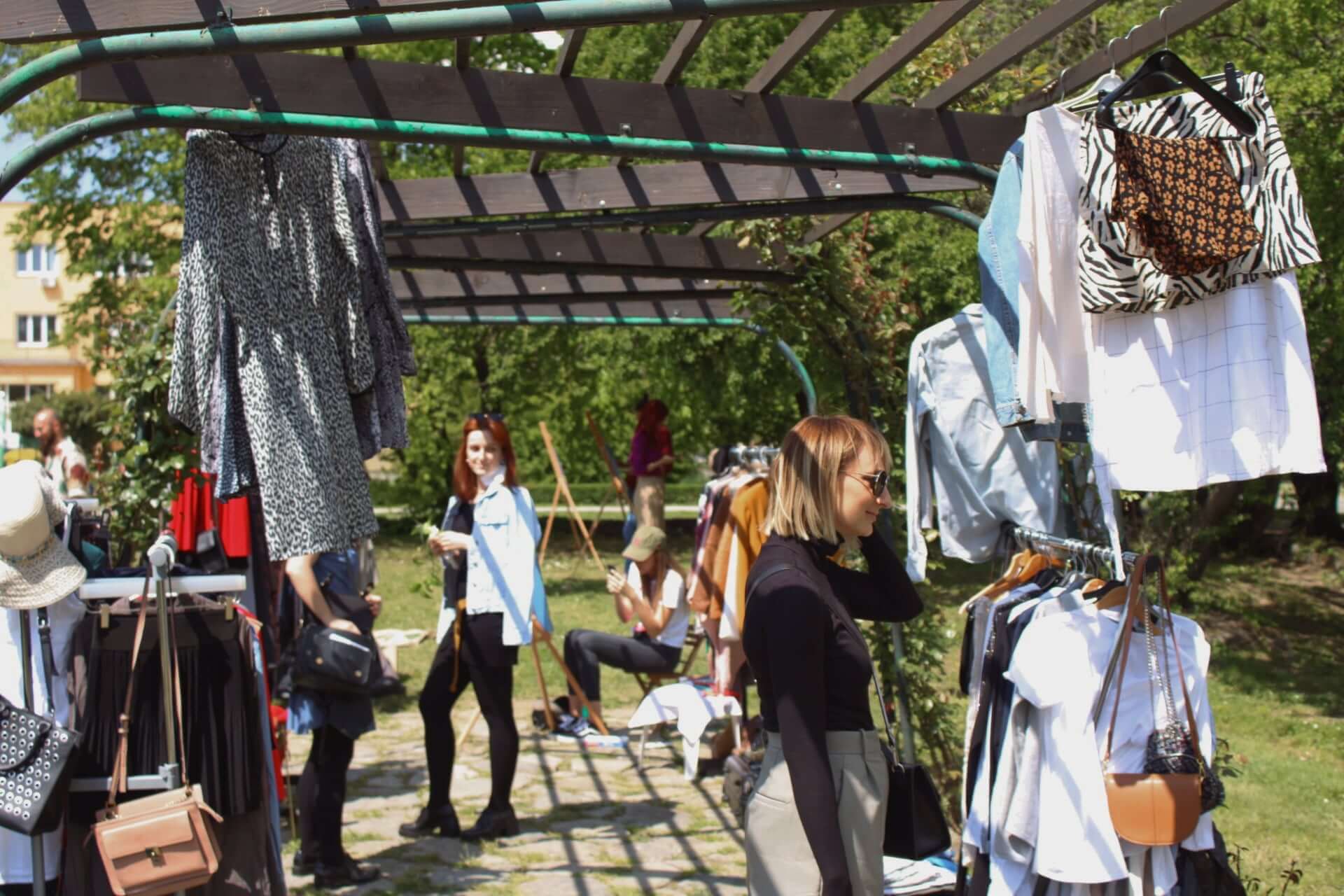
In addition, it would be nice if Slavonia and Baranja were written about in an optimistic tone, and not just about mass emigration. Although unfortunately many have sought their happiness outside this region, life has not disappeared. Changes are happening, people are trying, and a lot is happening regardless of all the challenges that stand in the way of success in this ungrateful environment of ours.
"Only through our involvement can we influence changes"
What is your motivation for projects? This is now your lifestyle, not just an occupation.
Working in an association becomes a way of life, whether I want to admit it or not. Classic working hours do not exist. Vacations have become an invisible concept to me because most of the activities are carried out during the summer. My office is wherever I can connect to the Internet. My motivation is to influence change, however small it may be. Only this way can we contribute to the creation of some new, sustainable and healthy habits that can only further enrich our lives. Only through our engagement can we directly affect changes in our community – which in the long term affects the understanding of the kind of society we leave to our descendants as an inheritance.
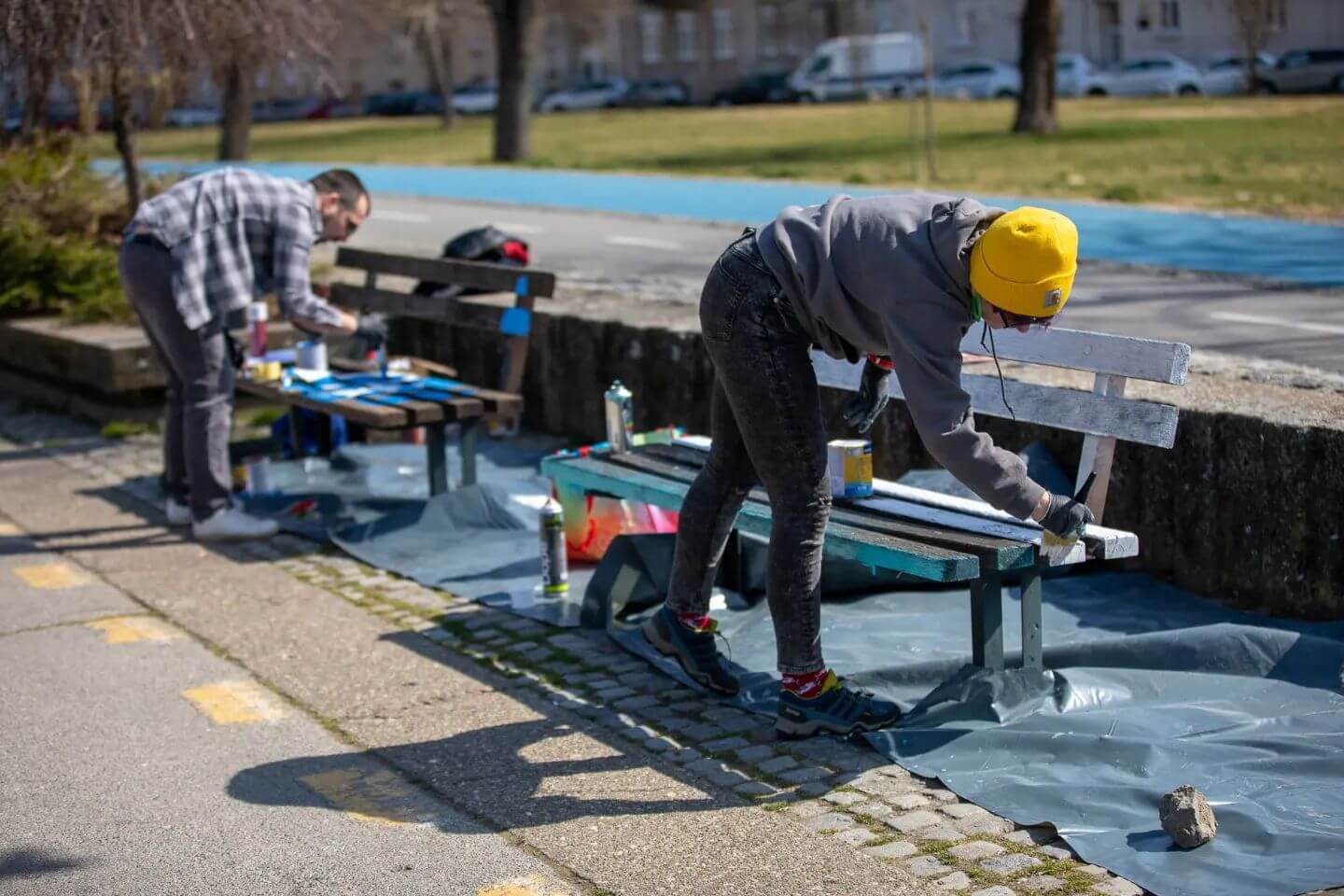
Reconstruction of the oldest tram stop
You have just presented an art installation within the oldest tram stop in Osijek through the Urban Intervention project, can you tell us more about it?
The Urban Intervention project is being implemented for the fourth year in a row to present artistic illustrations within the oldest tram stop in Osijek, which dates back to 1926. The station was neglected for many years and left to wait for better days. This is exactly why, with the support of donors and the Conservation Department in Osijek, we decided to restore the glass surface and give it a new purpose.
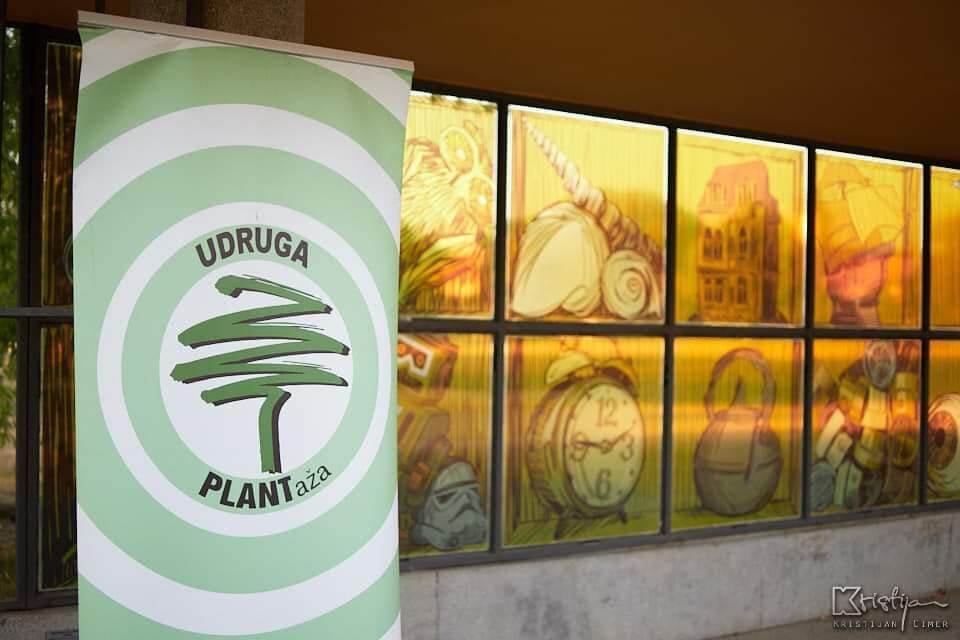
We desire to return the stop to its original state, refurbish the entire surface, and with the support of the City, restorers, and the Conservation Department in Osijek, make it a real small gallery space, unique in Croatia. Until that happens, we will continue to present new artistic illustrations to further promote urban culture and new artistic practices. This year we presented an artistic illustration signed by the famous Croatian street artist Lonac. So far, Slađana Zubić, Tea Jurišić, and Vedran Klemens have introduced themselves to the Osijek audience.
Project Urbani Osijek
The Urbani Osijek project connects urban culture through the tourist offer of the city. How much did it contribute to the tourist image of Osijek?
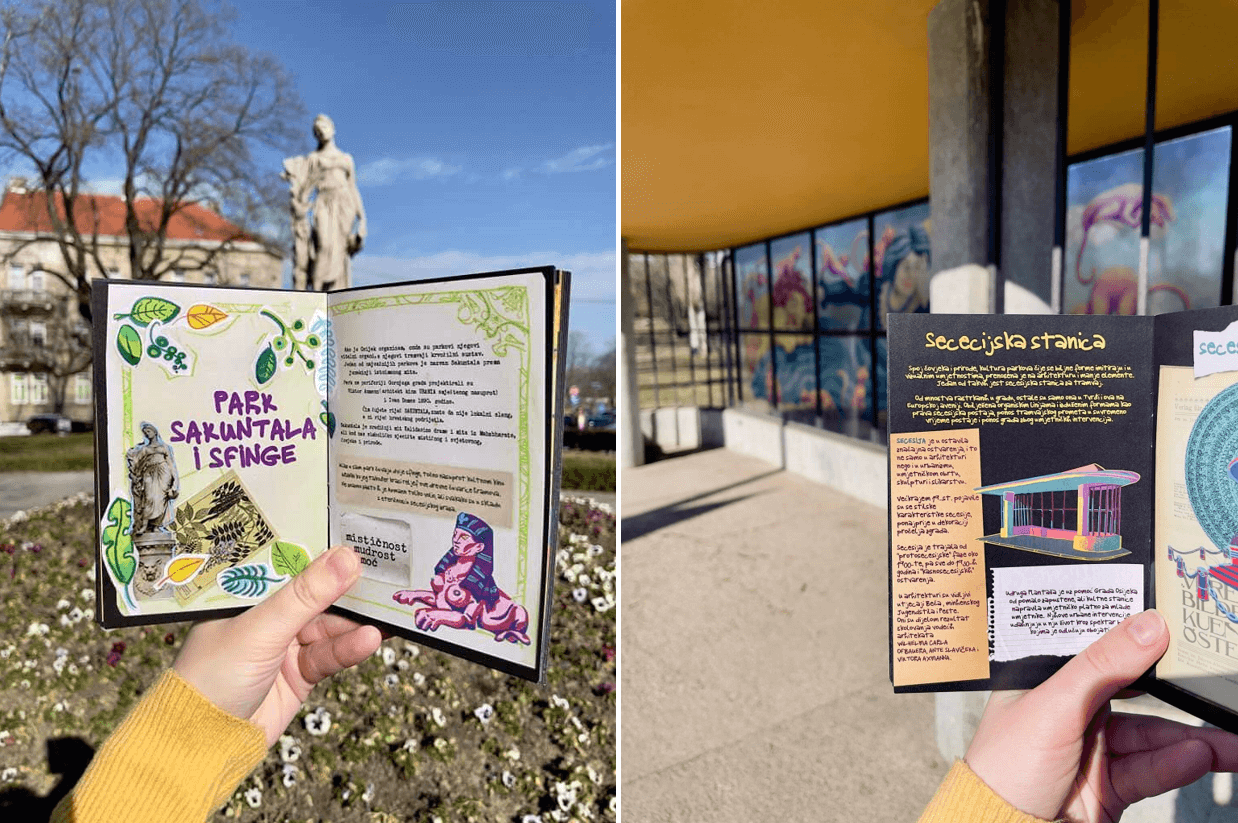
The Urbani Osijek project was created last year by the secretary of the association, Vedran Grizbaher. The project itself includes the promotion of urban culture through a touristic approach and contains a whole series of creative activities such as cycle-urban routes, concept lectures I Travel Solo in which female travelers are presented. There is also an urban guide to Osijek, which was created as a desire to present the contents of Osijek in one place in an illustrated version beautifully painted by Yellow Yuri. The project gave birth to creative solutions and original tourist products, such as the already mentioned urban guide, which we plan to promote even further.
The first art workshop
You are preparing the first art workshop "Vibration of Art" soon, whose theme will be Nikola Tesla. Can you tell us more about that?
The Vibration of Art is a project whose activities we are very much looking forward to. Our first activity will start soon at the Slama Land Art Festival, which has been organized by the Slama association for more than 15 years. This year the theme is Nikola Tesla. In accordance with that, we will hold a land art workshop and a Tesla transformer workshop under the expert guidance of Nikola Faller. The project itself also includes informal theater dance workshops led by Mira Sekereš from Shine Dance Studio, panel discussions, and poetry evenings.
What is she looking forward to?
Do you spend the whole summer working and what are you looking forward to in the autumn?
This year is unique for several reasons, so the whole summer has been busy for me. I will take a short break in September, and until then I will continue in the same rhythm. In the autumn, I will be working on the PLANTida ecologically sustainable festival and a whole series of new things that have yet to come. In any case, I'm happy with this busy creativity, I enjoy the process of learning and tinkering, and as long as it's like that, it doesn't need to be any other way!
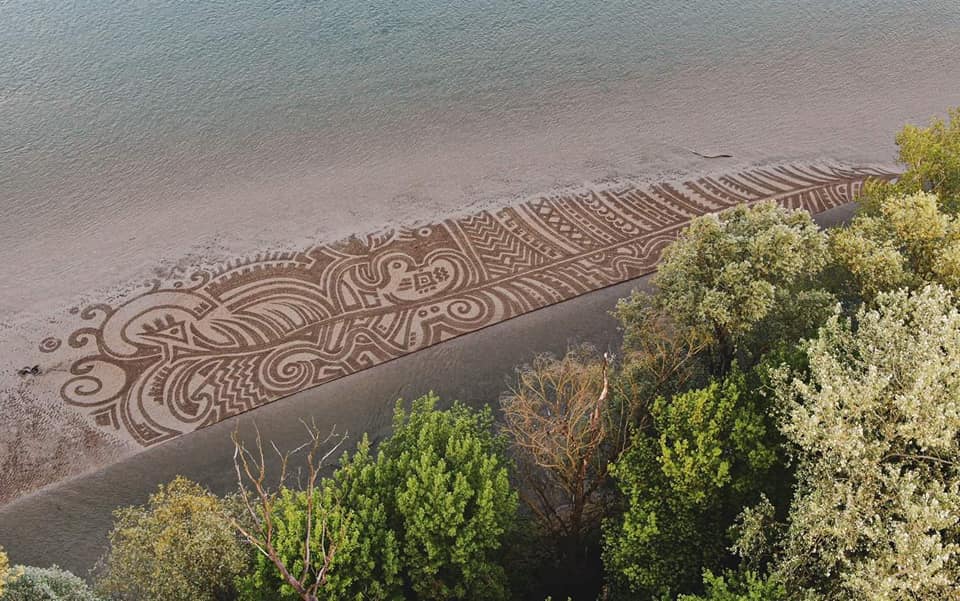
All photos by Udruga PLANTaža
Osijek is the regional centre of Slavonia and Baranja, and much like the rest of eastern Croatia, it is indeed full of life. Why aren't you here?
How good is your knowledge of eastern Croatia anyway? Take the CROMADS test above - how many places do you recognise?
For more, make sure to check out our dedicated Lifestyle section.
Meet Vukovar 365, Full of Life - Luka Maksimović Mone
July 28, 2022 – Meet Luka Maksimović, also known as Mone, also known in Vukovar as your go-to wall decorator, logo designer, the guy who can make your ideas come alive in visual form.
Long before there were murals and 3D street art, there was graffiti. This art of old is as present in Vukovar as anywhere else and was even integrated into festivals and events. From simple writings notifying us that they were, in fact, there, to some really elaborate and genuinely awe-inspiring designs, we have it and we love it all.
As for graffiti artists, it sure can be tricky as they always must defend the artist title, trying not to fall on the rebel and destroyer-of-walls side of things. This means that they constantly need to keep improving to impress. Mone has done just that. From the name that you would see a little too often in your neighbourhood, to being commissioned to paint walls and design logos, he has gone from naughty to nice, from kid to artist. We couldn’t be happier to follow along on his journey.
All photo credit: Mone
Tell us about yourself and your alter ego.
I am Luka Maksimović Mone and I'm 24 years old. The nickname was created to hide my identity and it was created through the evolution of nicknames that came from my last name: Maksimović - Maxo - Maxone – Mone.
What is your relationship with art?
My story on drawing starts back in kindergarten, where I had a friend who was great at it. I remember one day when we had a workshop and he drew the Hulk too well. That stuck in my memory and inspired me a lot. At home, I spent time drawing whenever I could. I practiced with my brother, drawing various objects that we could see on the table. Later on, I started drawing portraits, but realism as a direction did not satisfy me. The way I see it, you can just snap a photo.
Drawing quickly became a bit hard and boring, and since I'm a bit of a perfectionist I was by no means satisfied. One day we tried drawing graffiti and that was my first encounter with this kind of art. I remember that I chose the English word "book" and made eyes out of the two letters O and added a mouth below. This was completely new and exciting for me. I started using letters to create all kinds of shapes that came to mind.
Was that when you discovered your hidden talent?
That was when I discovered there were no rules, I could do whatever I wanted, in any style I liked, any size, form, or shape. It all came straight from my head, and luckily I was never short of ideas. As for talent, I wouldn't say that I discovered my talent there or that I am talented at all. I just spent a lot of time at my desk drawing, simply because it was too much fun.
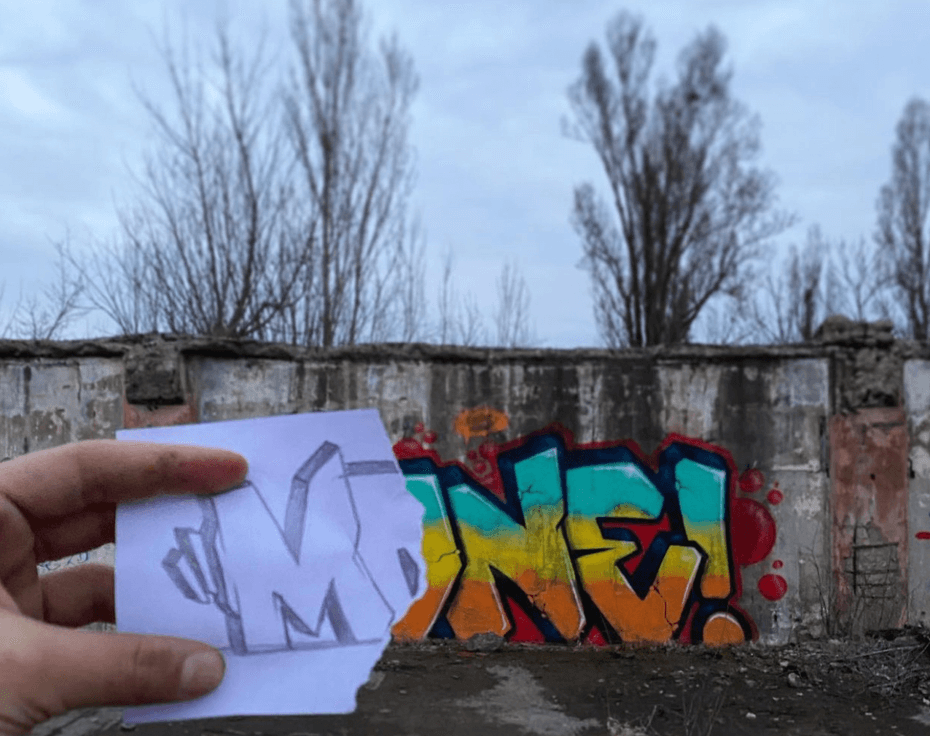
At which point did you go from paper to walls?
Soon after, my brother and I decided to try our first real graffiti. We found a wall and prepared everything, but we weren’t quite ready for the little obstacle that was me. I was too small and couldn't do it! My hands were too small, I couldn't hold the spray and squeeze the cap with one hand, I could barely do it with two hands. That was frustrating and caused my desire to slowly fade away and over time I completely neglected drawing. All until one time, in 3rd grade, during math class, I was so bored I wanted to jump out of the window. Instead, I remembered that I had used to draw graffiti all the time and decided to try it again. As soon as I drew my first lines it took me back. I felt like that child, like I was drawing for the first time. I was really happy with the sketches I made. A few days later, I bought a spray can and finished my first graffiti on the wall. I was intrigued and wanted more. It felt like I went back in time and simply continued where I had left off.
Eventually, you decided to do it in digital form.
While traditional graffiti wasn't bad, it wasn't anything special, and I knew I could do better. I started taking it more seriously and wanted to improve. After trying a few different techniques, I realised I needed a lot of money for the material and ran into a problem. So instead of buying markers and other things, I saved up to buy a tablet for graphic drawing which allowed me to switch to the digital canvas, where I had the best palette in the world, an inexhaustible source with every color imaginable. My mind was made up about what I wanted to do in the future.
What is the plan from here?
I am developing my project and plan to open a graphic design company and some other interesting things along with that. As the idea to open my own company developed, I also fell in love with tattooing. I recently bought a tattoo machine as well, so that will surely become a part ofg my workshop.
Tell us about your clients and projects so far and where we can find you.
I collaborated with various people as a freelancer, creating their visual identities. In Vukovar, for example, I collaborated with the fire department and one of the kindergartens. I also did a few projects with famous people such as Krešo Bengalka, Kukus clan, etc.
To check out my work, follow me on Instagram (@mone1zm).

Finally, how is the graffiti scene in Vukovar?
A graffiti scene barely exists here at all, as I'm the only one who does that. However, the city of Vukovar does push for street art a lot through the VukovArt organisation, who have brought many famous street artists from around the world to paint murals on buildings and create 3D street art.
All photos by Mone
For more, check out our lifestyle section.
Madonna With Child Painting Becomes Permanent Property Of MUO
ZAGREB, 14 July 2022 - The director of the Museum of Arts and Crafts (MUO), Miroslav Gašparović, and art collector Dinko Podrug, on Thursday signed a donation agreement for the Madonna and Child painting, transferring the ownership of the masterpiece by Croatian-Italian master Andrija Medulić Schiavone to the MUO.
During the signing ceremony, Gašparović thanked Croatian American Podrug, an art collector and psychiatrist from New York, for this extremely important initiative for Croatian cultural and art history, "which shows the connection between Croatian culture and Croats all over the world."
He said that this masterpiece by the great late Renaissance painter Andrija Medulić, a native of Zadar who emigrated to Venice, represents a "great qualitative shift and gain" for MUO, the city of Zagreb and Croatia.
"Croatia has not had this category and quality of painting until now. With this donation agreement, Croatia is receiving a work of one of the most important painters of the 16th century, who was the link between Titian and Tintoretto and in a way introduced Mannerism to Venetian painting," said Gašparović.
The story of the Madonna and Child painting with the MUO began in 2017 when it was included in its permanent exhibition through the good offices of Dinko Podrug.
He signed the donation agreement on behalf of the National Federation of Cultural Foundations of Croatian Americans (NFCAFC), headed by Steve Rukavina, after he bought it at the Sotheby's auction house a few years ago .
After receiving a thank you note from Gašparović, Podrug said he immediately realised that, instead of his living room, a better place for the painting would be in a Croatian museum. He originally planned to donate the painting as a gift, but then he decided, with the help of NFCAFC, to establish a mechanism through which other American citizens could also donate paintings to Croatia and obtain a tax deduction for this in the USA. Currently, about a dozen pictures have been donated to that programme, he said.
Gašparović commended this stimulating mechanism and expressed the hope that in the future it will enable similar donations to other Croatian cultural institutions.
He said that this donation is only the first step that heralds a new era for the MUO, which was temporarily closed due to reconstruction after the earthquake and its exhibitions were dislocated. He announced a donation from the Urban family, the mother of photographer Pavo Urban, already for September and a donation from the architects Penezić and Rogin.
"The MUO's holdings will continue to grow, and the museum will remain alive, this is in a way the symbolic beginning of a new era for the MUO," said the director.
The partner of the event is the Croatian Heritage Foundation.
Zagreb Through the Eyes of a Sixteen Year Old Expat
June 25, 2022 - Zagreb, Croatia’s prized northwestern capital, has gained quite the attention recently – with its captivating architecture and an abundant amount of summer activities. But is it exciting to live in for teenagers? Does it truly have a lot to offer to the vast number of youthful souls living there? Find out in the first of a new TCN series - Zagreb Through the Eyes of a Sixteen-Year-Old Expat. Prepare yourself for the culture that I have experienced as an expat living in Croatia’s most important transport hub! In today’s episode, meet the art culture of Zagreb.
From charming scenery to a distinguishable amount of greenery, offbeat entertainment, and a low crime rate, Zagreb has grown detrimentally on me during the single year I spent here (with one more to conquer before leaving for university). Nothing about this city seemed appealing to me when my parents unexpectedly told me that, in the next few weeks, we are moving abroad for their work.
Leaving my close ones. Having to carve out a new social life. Finding a new school. It was all out of my comfort zone – which I very rarely challenge. I was not prepared to be thrown into an entirely unfamiliar community but found comfort in the fact that no one ever is. And so, with time I found myself falling in love with the medieval “old city” with contemporary Croatian culture and art.
Although Zagreb’s established reputation as a destination of culture, music, and art becomes notorious throughout the summertime, it still exudes everything it has to offer on a day-to-day basis – no matter the season. During my time here I have noticed several events provided by the city to its citizens, such as the Advent, the festival of lights, and several museums hosting gatherings for art enthusiasts. With smiling faces all around you, excited laughs from children running by, and an intoxicating atmosphere spreading with each passing second, Zagreb knows how to bring people together and have them share a memorable experience with one another.
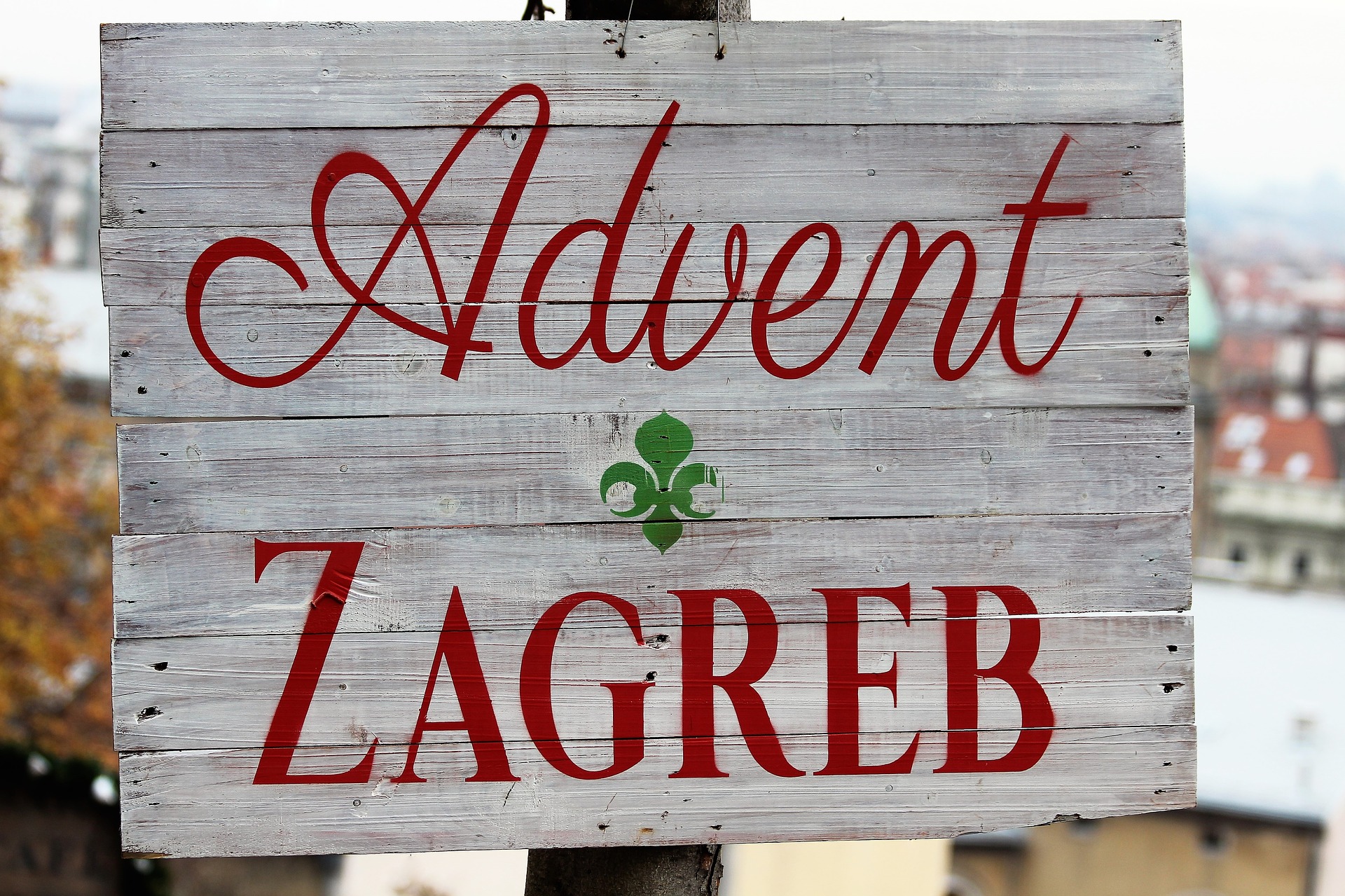 Moreover, the city’s combination of modern pleasure with historic architecture seems to divulge contrasts unlike anything else. For example, the Croatian National Theatre (1895) has shown generations of artists showcasing contemporary beauty on multiple occasions – bringing entertainment to all age groups living in the city of Zagreb. Additionally, the National Museum of Modern Art and the Ethnographic Museum of Zagreb both interpret and spread numerous museum activities aimed to promote the culture of the past and present.
Moreover, the city’s combination of modern pleasure with historic architecture seems to divulge contrasts unlike anything else. For example, the Croatian National Theatre (1895) has shown generations of artists showcasing contemporary beauty on multiple occasions – bringing entertainment to all age groups living in the city of Zagreb. Additionally, the National Museum of Modern Art and the Ethnographic Museum of Zagreb both interpret and spread numerous museum activities aimed to promote the culture of the past and present.
Overall, I believe the diverse experience provided by Croatia’s cultural centre nurtures and promotes art in all kinds of forms. It encourages us citizens to discover various talents and institutions that mirror how culturally rich the city is. From my experience, all the events seem to grant a large number of locals and visitors the ability to view such creations from various open spaces – providing a level of fulfilment to all who attend!
Do not miss out on the opportunity to discover the city’s distinct personality by finding out more about the art culture it is exceptionally known for and the enviable summer programme that has recently started.
For more, check out our lifestyle section.
World's Best Naive Art: Authentically Croatian Hlebine School
September 1, 2021 – We visit Podravina to discover the incredible Hlebine School of Croatian Naive Art
Croatia is sometimes difficult to find. Of course, with modern GPS and Croatia's nine international airports, getting here is no problem. But just where are you when you arrive?
Looking down at your dinner, the plate may hold a dish recognisable across the Mediterranean. Above your head, the architecture could be Roman, Austro-Hungarian or modern, indistinguishable. Ottoman influence lies everywhere from the best-loved handheld snacks to the mountain of slippers in every dwelling's doorway.
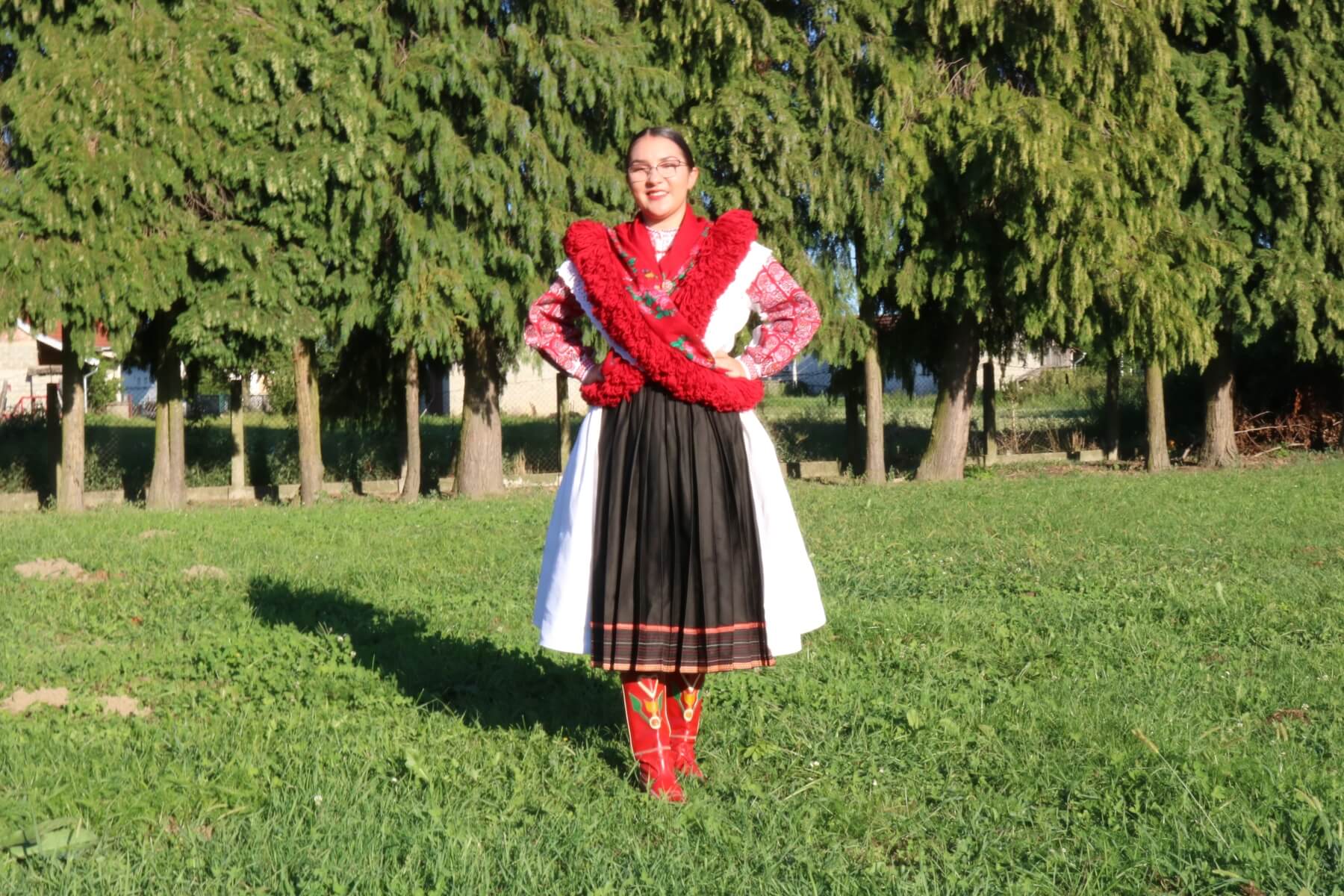 A friendly local wears the folk costume of the small region surrounding Koprivnički Ivanec, near Koprivnica. The costume features the incredibly intricate Ivanečki vez embroidery, which has been safeguarded locally for over 90 years and is now a protected part of Croatia's cultural heritage. Photo © Marc Rowlands.
A friendly local wears the folk costume of the small region surrounding Koprivnički Ivanec, near Koprivnica. The costume features the incredibly intricate Ivanečki vez embroidery, which has been safeguarded locally for over 90 years and is now a protected part of Croatia's cultural heritage. Photo © Marc Rowlands.
Actually, the true essence of the country you'll find in the Croatians themselves. And yet, their history is all too often obscured by the impositions of empires that once were here. However, we can find this history away from the major cities, the centres of influence. We find it in the villages. Specifically, in their folk costume, their folk song and folk dance. And we find it in the art there.
What is Naive Art?
 Cows In The Woods by Ivan Generalić, hanging at the Galerija naivne umjetnosti (Gallery of Naive Art), Hlebine © Koprivnica Town Museum
Cows In The Woods by Ivan Generalić, hanging at the Galerija naivne umjetnosti (Gallery of Naive Art), Hlebine © Koprivnica Town Museum
Naive art is any art made by someone who has received no formal or classical training. In this sense, the earliest discovered art of humans – cave paintings – are naïve art. However, there is nothing the classical art world likes more than specifically defining art movements. And, to them, the modern era of European Naive Art begins in the late 19th Century, with a growing appreciation of painters like French Post-Impressionist Henri Rousseau (1844–1910).
Because of the lack of formal, classical or academic training, it is said that common characteristics exist within the work of many Naive Artists. Specifically, these characteristics stem from an ignorance of strict perspective. Naive Artists often do not mute colours or lessen detail with distance. Also, they often don't attempt to accurately decrease the size of objects at distance.
Croatian culture as a part of national identity
 Horned horse by Ivan Generalić, hanging at the Galerija naivne umjetnosti (Gallery of Naive Art), Hlebine © Koprivnica Town Museum
Horned horse by Ivan Generalić, hanging at the Galerija naivne umjetnosti (Gallery of Naive Art), Hlebine © Koprivnica Town Museum
Croatian Naive Art is one of the best recognised and best-loved in the world. In truth, Croatia's movement doesn't begin to emerge until well into the 20th Century. Although, it is important to view the country's Naive Art within its broader search for a Croatian national identity. The roots of this movement stem back over 100 years prior to the emergence of Croatian Naive Art, beginning with the foundation of the Illyrian movement, Matica Hrvatska and more.
This older movement of national awakening had strong preoccupations with language, written text and cultural identity. Actually, its instigators were very much the educated intelligentsia of cities like Zagreb.
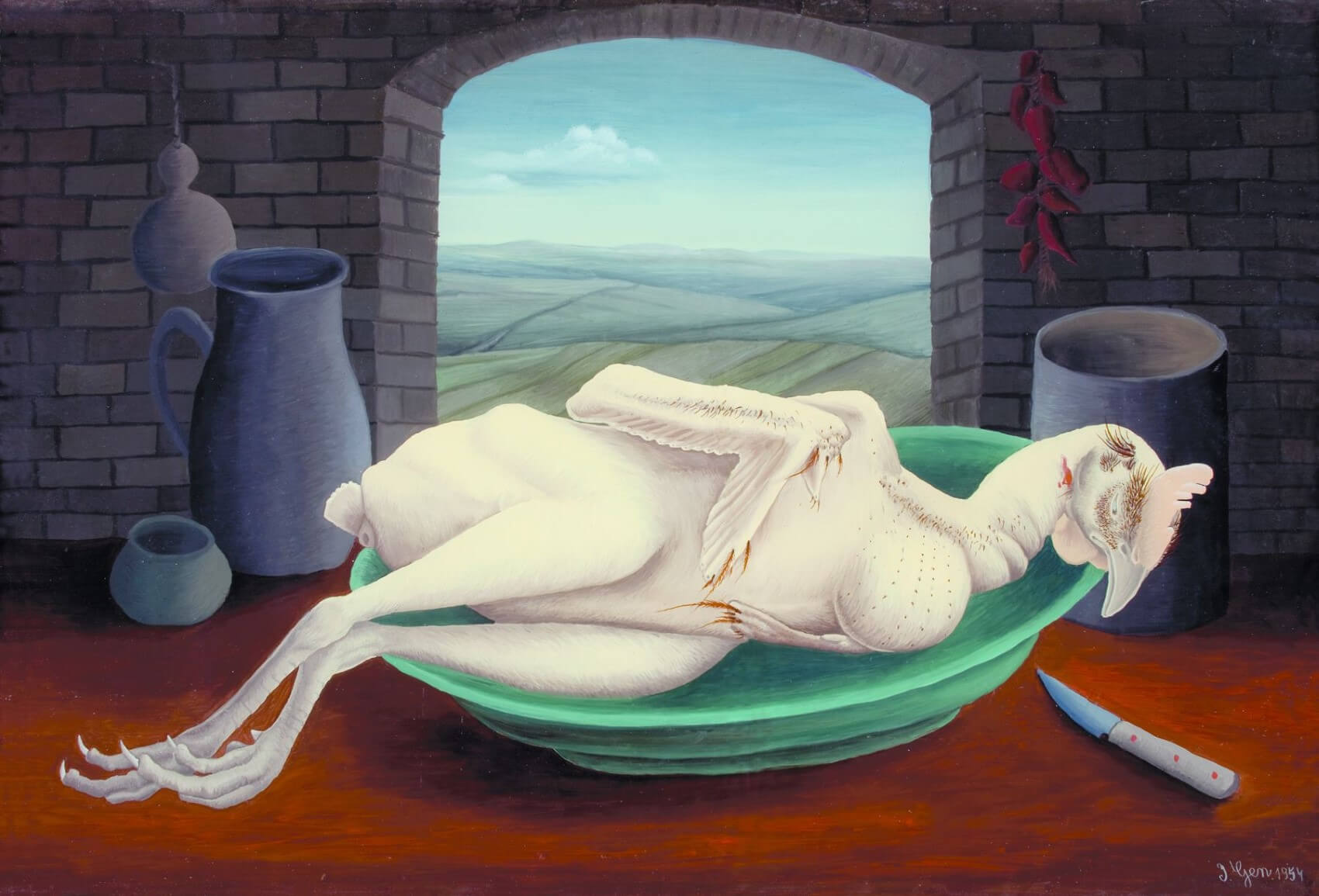 'A Battered Rooster' by Ivan Generalić, hanging at the Galerija naivne umjetnosti (Gallery of Naive Art), Hlebine © Koprivnica Town Museum
'A Battered Rooster' by Ivan Generalić, hanging at the Galerija naivne umjetnosti (Gallery of Naive Art), Hlebine © Koprivnica Town Museum
Before the end of World War I, Russia had undergone two revolutions. After the war, the German, Austro-Hungarian and Ottoman empires collapsed. Much of Europe was plunged into over half a decade of political upheaval - revolts, unrest and strikes by workers. Mostly socialist in sentiment - organised by workers and disillusioned former soldiers – this unrest and the accompanying birth of new nations lay not in the hands of the inner-city intelligentsia. And, many believed the cultural and artistic expression which reflected this new era should also come from the proletariat.
Krsto Hegedušić and the Earth Group (Grupa Zemlja)
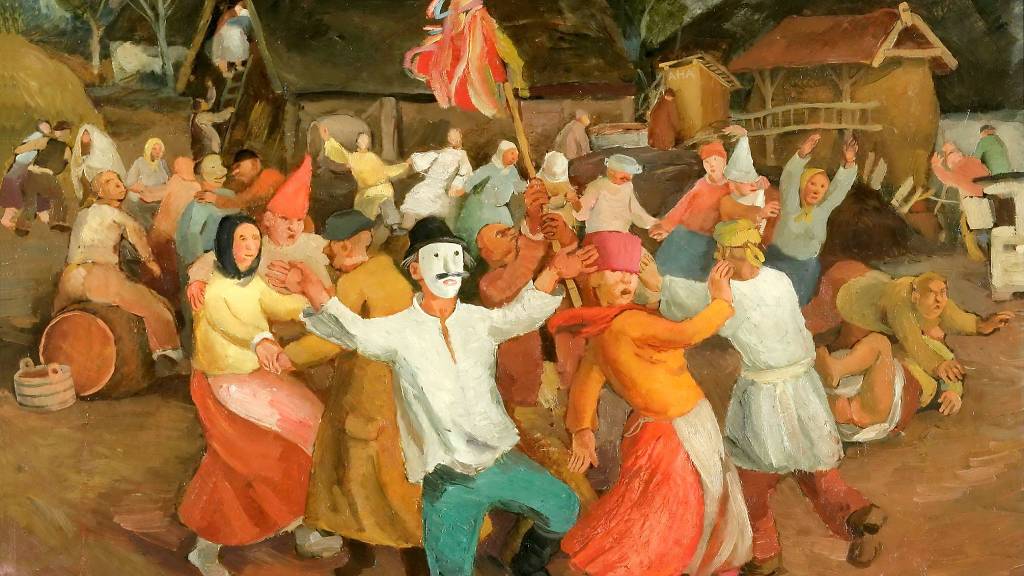 Krsto Hegedušić 'poklade' © Muzej moderne i suvremene umjetnosti Rijeka (MMSU)
Krsto Hegedušić 'poklade' © Muzej moderne i suvremene umjetnosti Rijeka (MMSU)
One Croat who believed strongly in this was painter Krsto Hegedušić. He co-founded the Earth Group in 1929 during a challenging period for Croatia. Europe was still reaping the dire economic repercussions of the First World War. Croatia had finally been freed of Austro-Hungarian hegemony, only to be forced into existing within another monarchy.
The founding beliefs of the Earth Group were that authentic artistic expression should be a product of the time and space whence it came and should be free of foreign influence. Art should not be created for the sake of art, but to depict an actual reality.
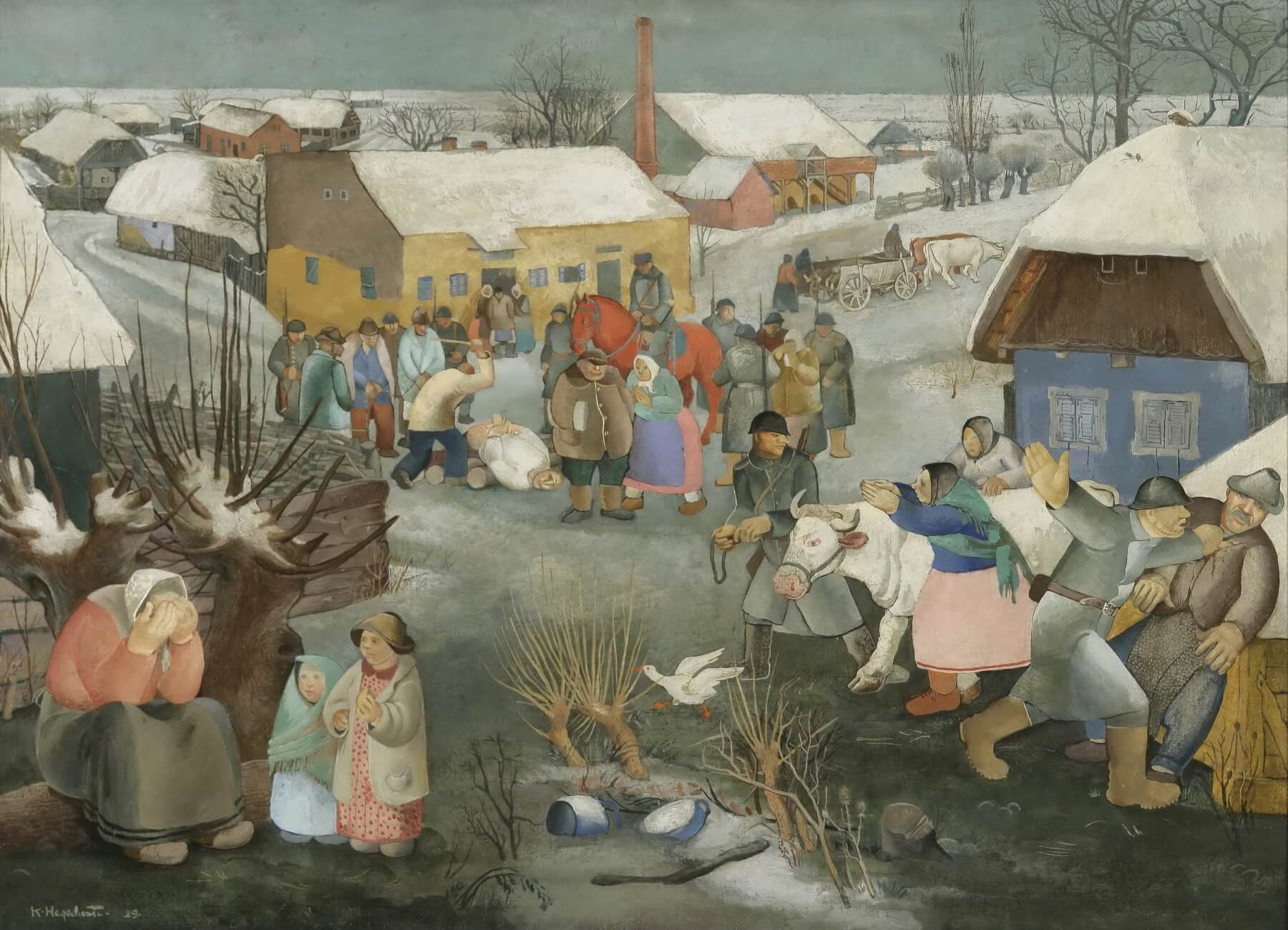 Krsto Hegedušić 'Rekvizicija (Requisition)', 1929 © Museum of Modern and Contemporary Art, Rijeka
Krsto Hegedušić 'Rekvizicija (Requisition)', 1929 © Museum of Modern and Contemporary Art, Rijeka
Krsto Hegedušić himself was very much a product of his studies. In 1920 he enrolled in what is today the Academy of Fine Arts in Zagreb. After graduating, he spent an additional two years on a scholarship in Paris. And yet, as a painter, his subject matter often reflected the world around him. Social critiques, within his work he depicted everyday poverty and the exploitation of Croatian peasants.
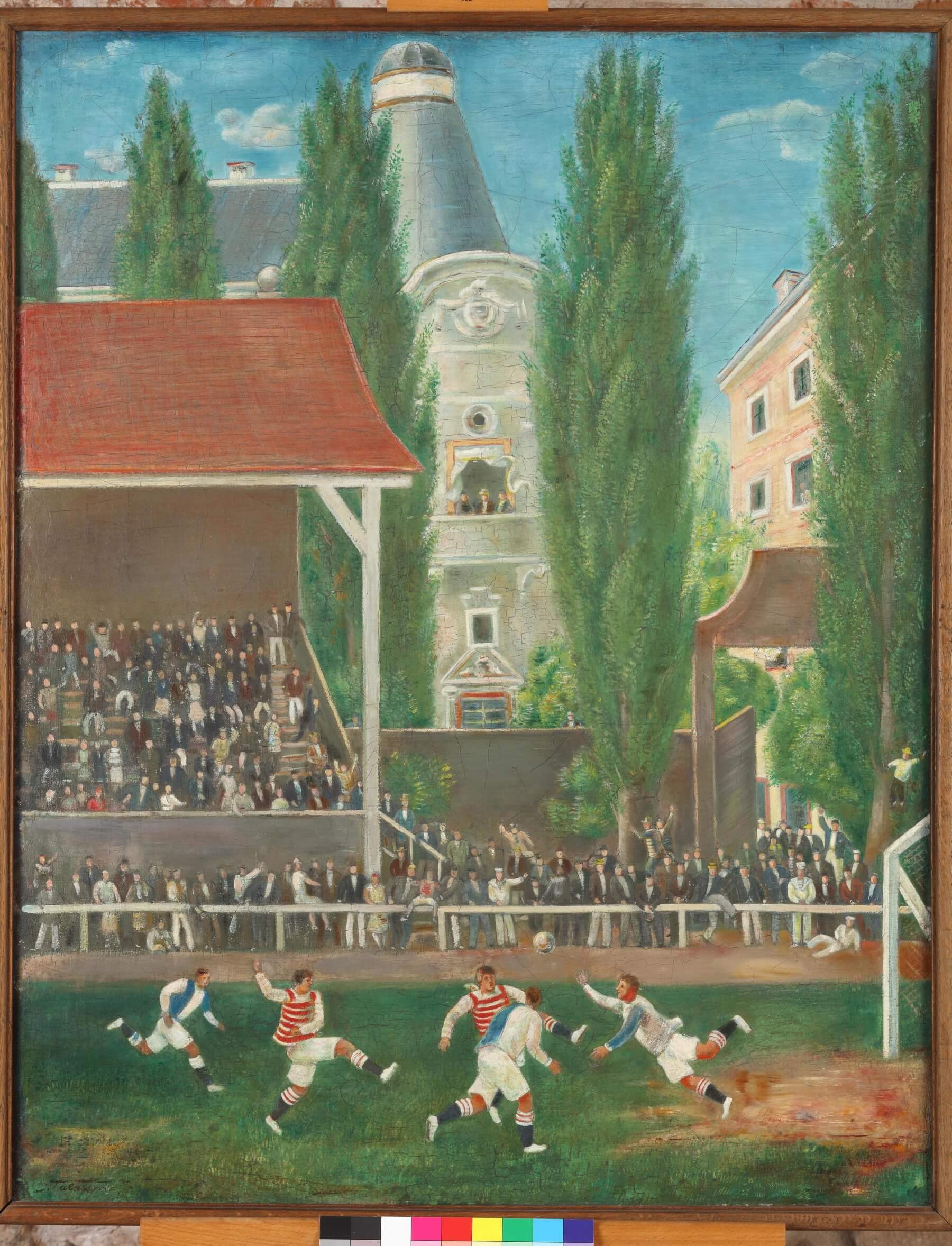 'Football match' by another of the Earth Group's founding members, Ivan Tabaković, 1927 © Gallery of Matica srpska, Novi Sad
'Football match' by another of the Earth Group's founding members, Ivan Tabaković, 1927 © Gallery of Matica srpska, Novi Sad
Born in Petrinja, Krsto Hegedušić spent summer holidays in the idyllic countryside and agricultural land surrounding his father's birth village of Hlebine, Podravina. When he was aged just 8 years old, Krsto's father died. Subsequently, the family moved to Hlebine. Later, Krsto would spend time living in Zagreb, not least for the duration of his studies. But, just one year into the life of the Earth Group, Krsto Hegedušić discovered a teenage artist back in Hlebine.
Hlebine School First Generation: Ivan Generalić, Franjo Mraz and Mirko Virius
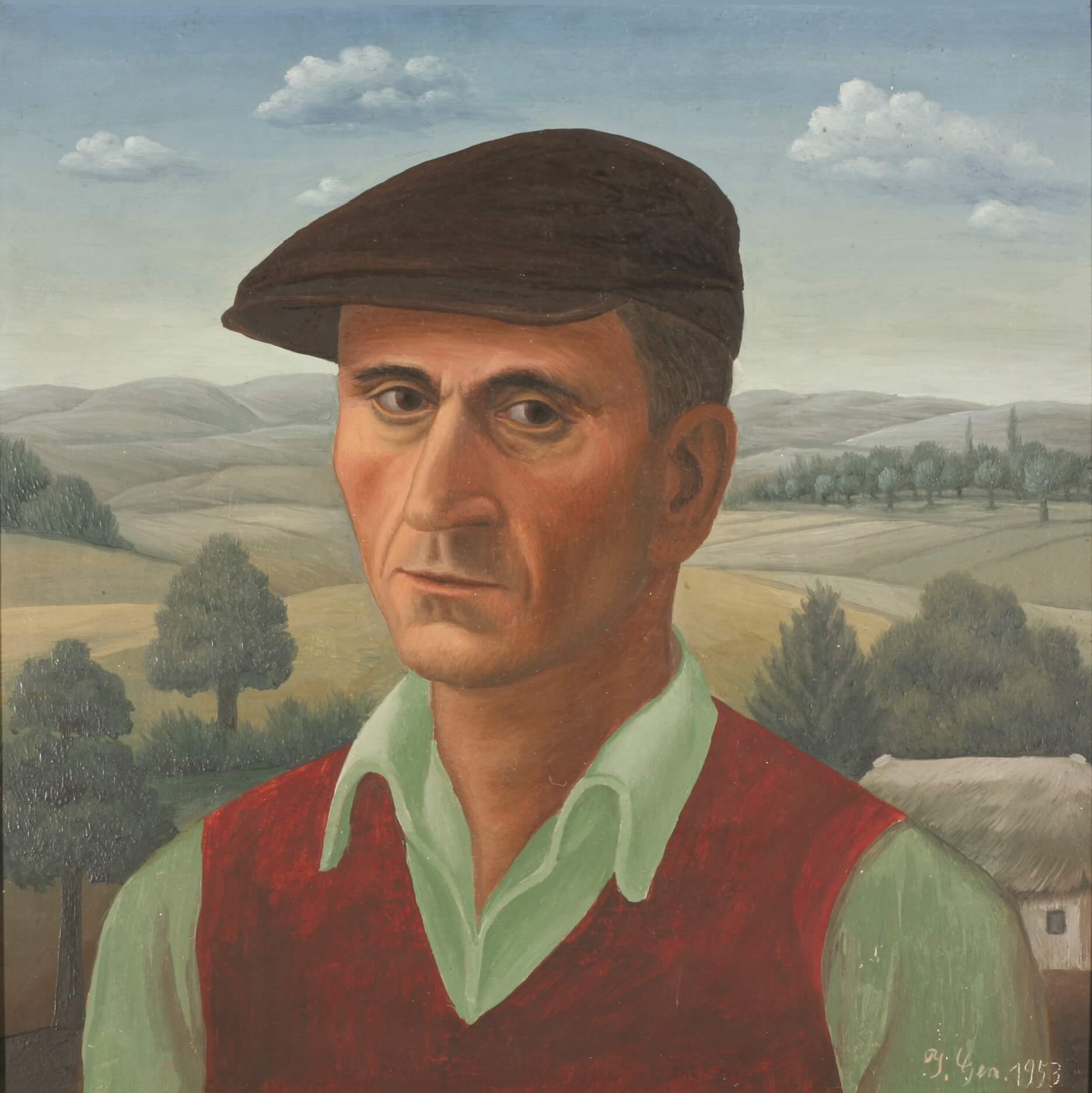 Self-portrait by Ivan Generalić, hanging at the Galerija naivne umjetnosti (Gallery of Naive Art), Hlebine. Photo © Koprivnica Town Museum
Self-portrait by Ivan Generalić, hanging at the Galerija naivne umjetnosti (Gallery of Naive Art), Hlebine. Photo © Koprivnica Town Museum
When we speak of the Hlebine School within Croatian Naive Art we are not actually talking about a building, an institution of learning. After all, the very definition of a Naive Artist is they are not classically trained. Instead, the Hlebine School is a discipline. And, more so than any Croatian Naive Art that followed, it is quite easy to define.
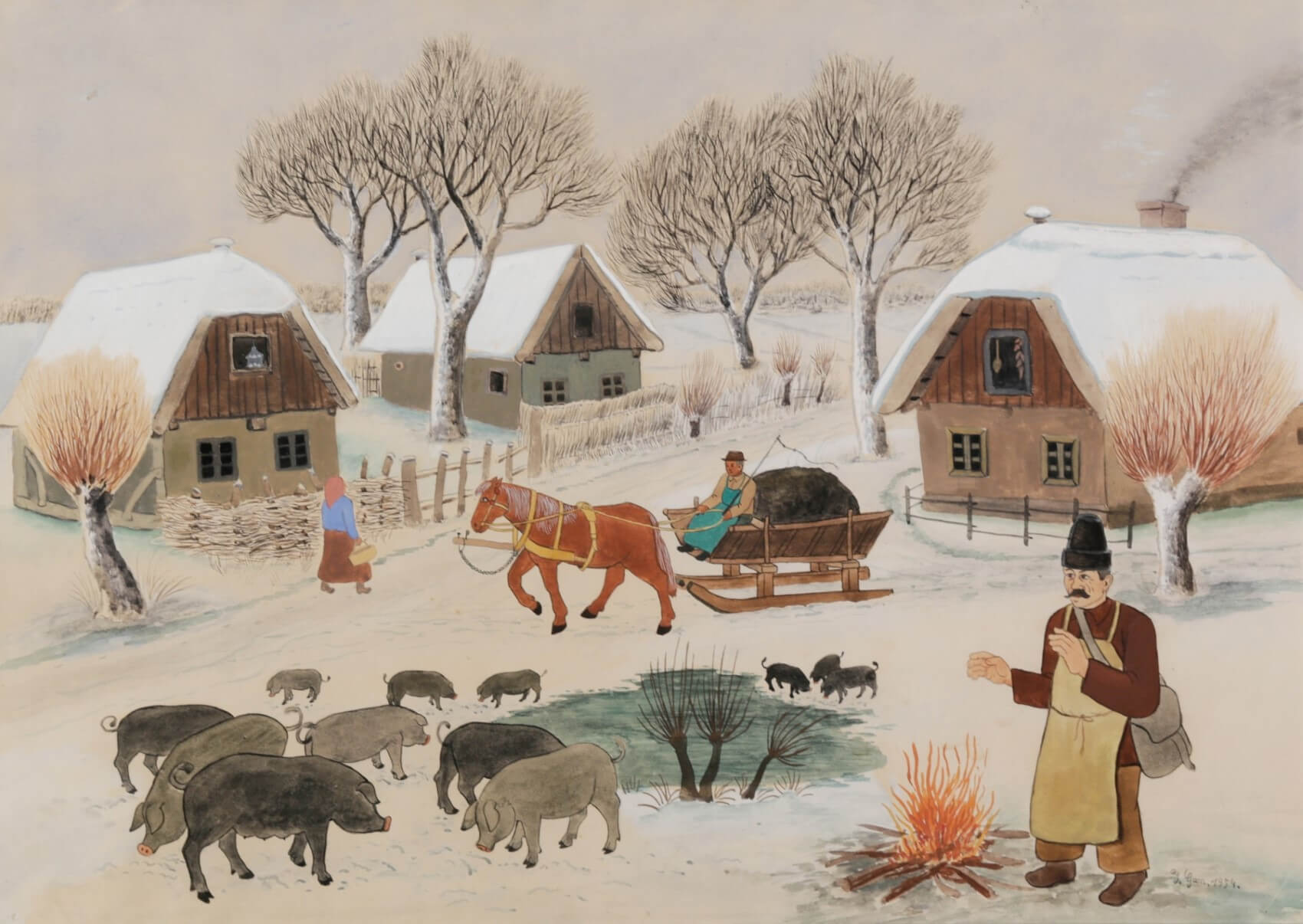 'Kanas' by Ivan Generalić, hanging at the Galerija naivne umjetnosti (Gallery of Naive Art), Hlebine © Koprivnica Town Museum
'Kanas' by Ivan Generalić, hanging at the Galerija naivne umjetnosti (Gallery of Naive Art), Hlebine © Koprivnica Town Museum
Within its first generation, the three most prominent artists are Ivan Generalić, Franjo Mraz and Mirko Virius. Both Ivan Generalić and Franjo Mraz were born, lived and were discovered by Krsto Hegedušić in the village of Hlebine. Mirko Virius was from Đelekovec, less than 15 kilometres to their north-west.
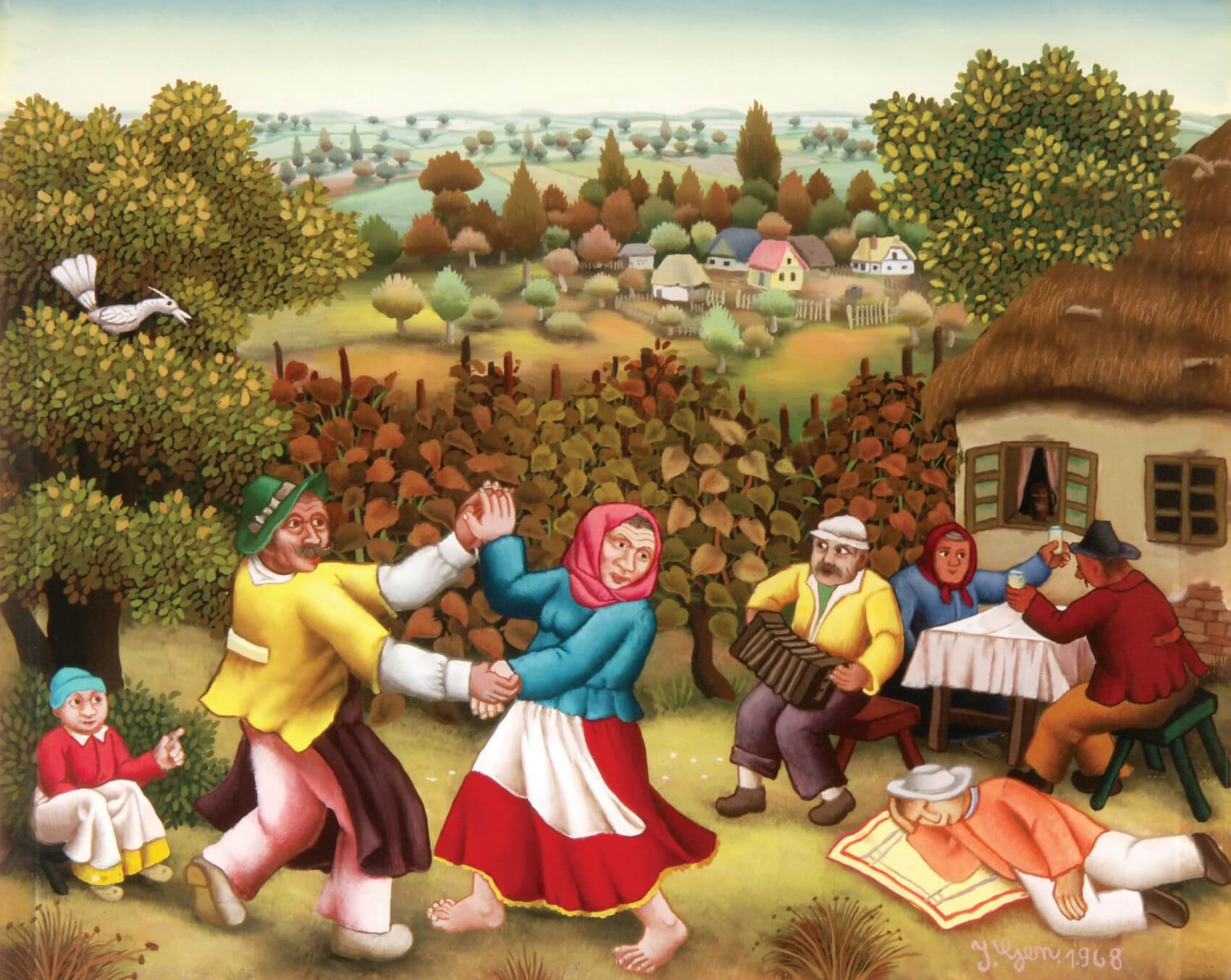 'Ples v goricaj' by Ivan Generalić, hanging at the Galerija naivne umjetnosti (Gallery of Naive Art), Hlebine © Koprivnica Town Museum
'Ples v goricaj' by Ivan Generalić, hanging at the Galerija naivne umjetnosti (Gallery of Naive Art), Hlebine © Koprivnica Town Museum
Key to identifying the Hlebine School in its First Generation is the subject matter. All three of these artists painted the world around them – their neighbours and peers, living everyday lives, in the villages, landscape and towns of today's Koprivnica-Križevci County. Certainly, Krsto Hegedušić helped inspire this subject matter, moulding the artists to suit the ethos of the Earth Group.
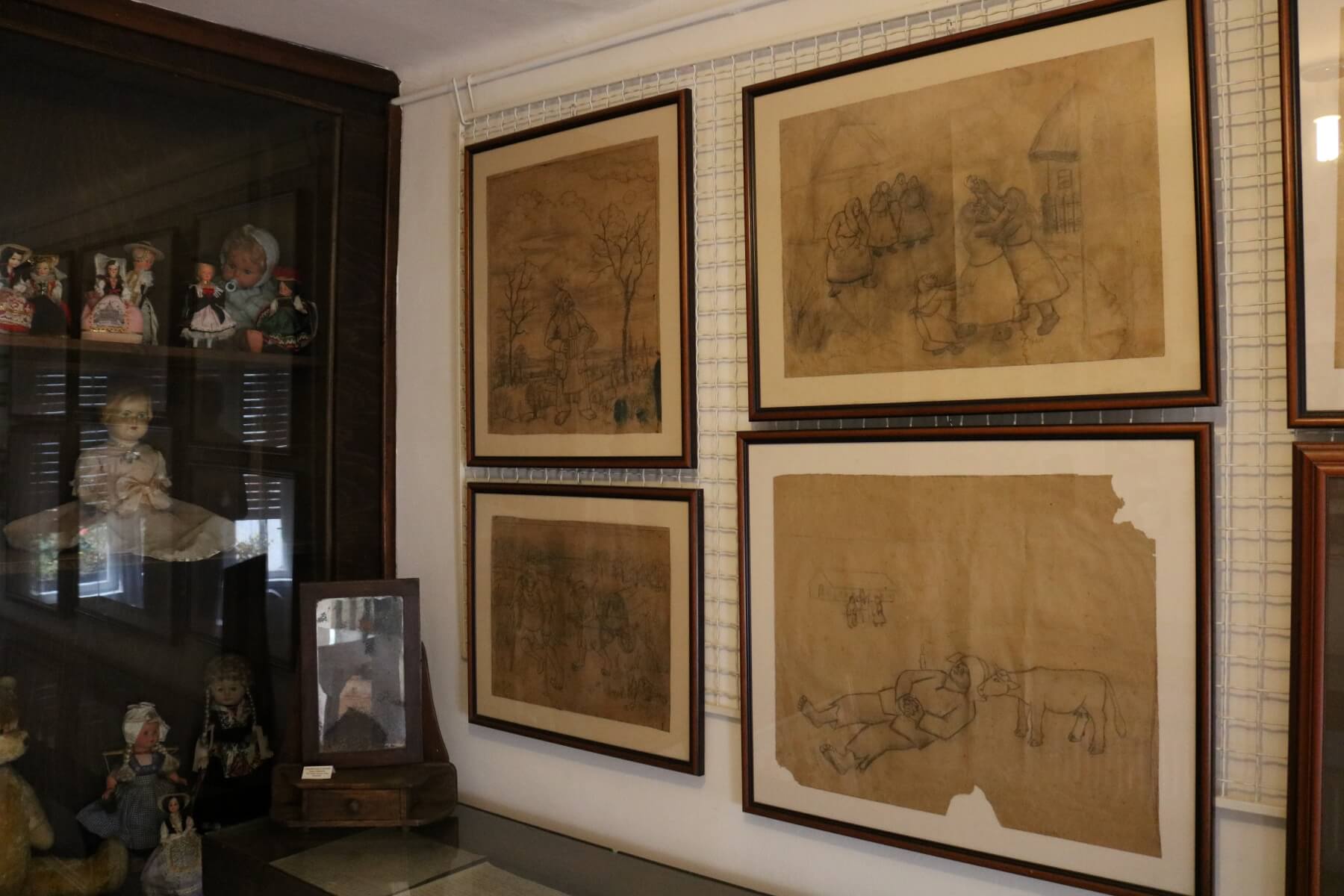
Ivan Generalić was just 16 years old when discovered by Krsto Hegedušić in 1930. The meeting would have a fast and long-lasting impact on Generalić. Ivan's humble early canvasses were the brown paper bags used in the business of a close relative. Yet, within a year of meeting Hegedušić, Ivan Generalić found his work being exhibited in Zagreb.
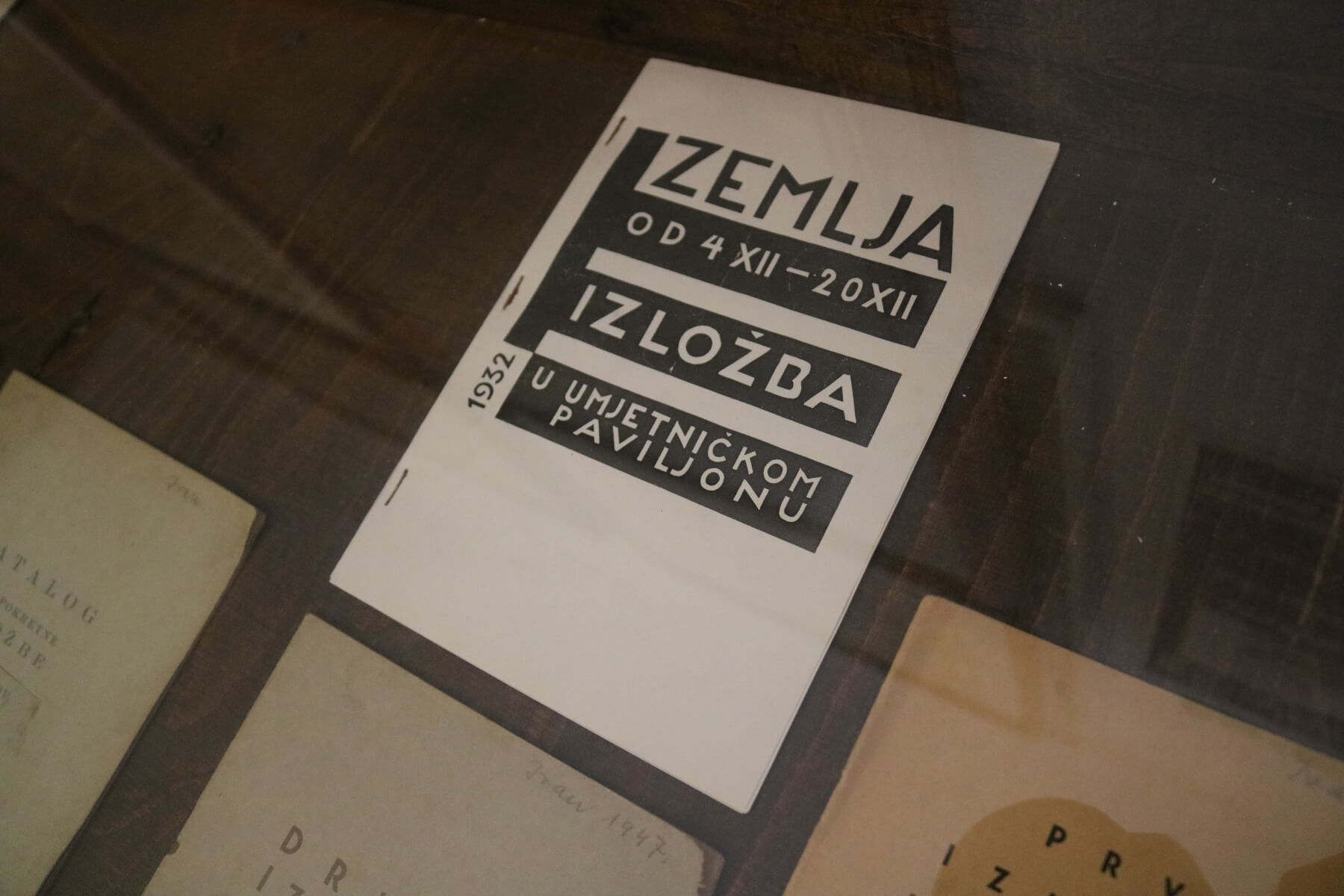
Hegedušić's shaping of the artists didn't obliterate their existing perspectives as much as it simply shifted them. For instance, Hegedušić's advice might have been "Instead of painting the church, why not paint people walking to the church in the snow?" or "Instead of marking the religious holiday by painting its origin story, why not show how you and your neighbours celebrate this holiday?"
Whether Hegedušić was conscious of doing it, or whether the artists were willfully lead, this guidance ultimately had the effect of politicising their work. In turn, this would lead the most authentic of all Croatian art into dangerous times when fascists took over the country. Proletarian in their themes, the Hlebine School and the Earth Group became viewed as Communist. The latter group was banned and Hegedušić arrested several times. During the Second World War, Mirko Virius was arrested, taken to a concentration camp in Zemun and executed. Ivan Generalić's painting of the sorrowful incident, 'The Death of Virius', is among his most famous. Franjo Mraz was also arrested during World War II but managed to escape.
 'Mask' by Ivan Generalić, hanging at the Galerija naivne umjetnosti (Gallery of Naive Art), Hlebine © Koprivnica Town Museum
'Mask' by Ivan Generalić, hanging at the Galerija naivne umjetnosti (Gallery of Naive Art), Hlebine © Koprivnica Town Museum
Aside from informing the subject matter of their work, Hegedušić also educated the painters in different techniques. One of these techniques – painting on glass – would become an enduring component of the Hlebine School and Croatian Naive Art.
Painting on glass
 'Eiffel Tower' by Ivan Generalić. The original hangs at Galerija naivne umjetnosti (Gallery of Naive Art), Hlebine © Koprivnica Town Museum
'Eiffel Tower' by Ivan Generalić. The original hangs at Galerija naivne umjetnosti (Gallery of Naive Art), Hlebine © Koprivnica Town Museum
Copying the style from imported religious art, when Hlebine School artists learned to paint on glass, it gave their efforts several distinct qualities. Firstly, if stored in the right conditions – away from damaging light – the glass protects the colours of the paint. As a result, much Hlebine School art is as brilliantly vivid today as the day it was first painted.
Secondly, this format makes the works heavy and fragile. Several masterpieces have been lost by falling to the floor and smashing.
Thirdly, painting on glass is time-consuming and challenging. Each painting must be thought out and planned in advance. The painter initially makes a sketch or preliminary painting as a guide. The image is then transferred to glass effectively in reverse. Details in the forefront of the painting must be applied first, with the background painted on top. Throughout the process, the artist will continuously check their progress on the opposite side of the glass.
Hlebine School Second Generation and onwards: Josip Generalić, Ivan Večenaj, Ivan Lacković, Mijo Kovačić, Franjo Filipović, Dragan Gaži
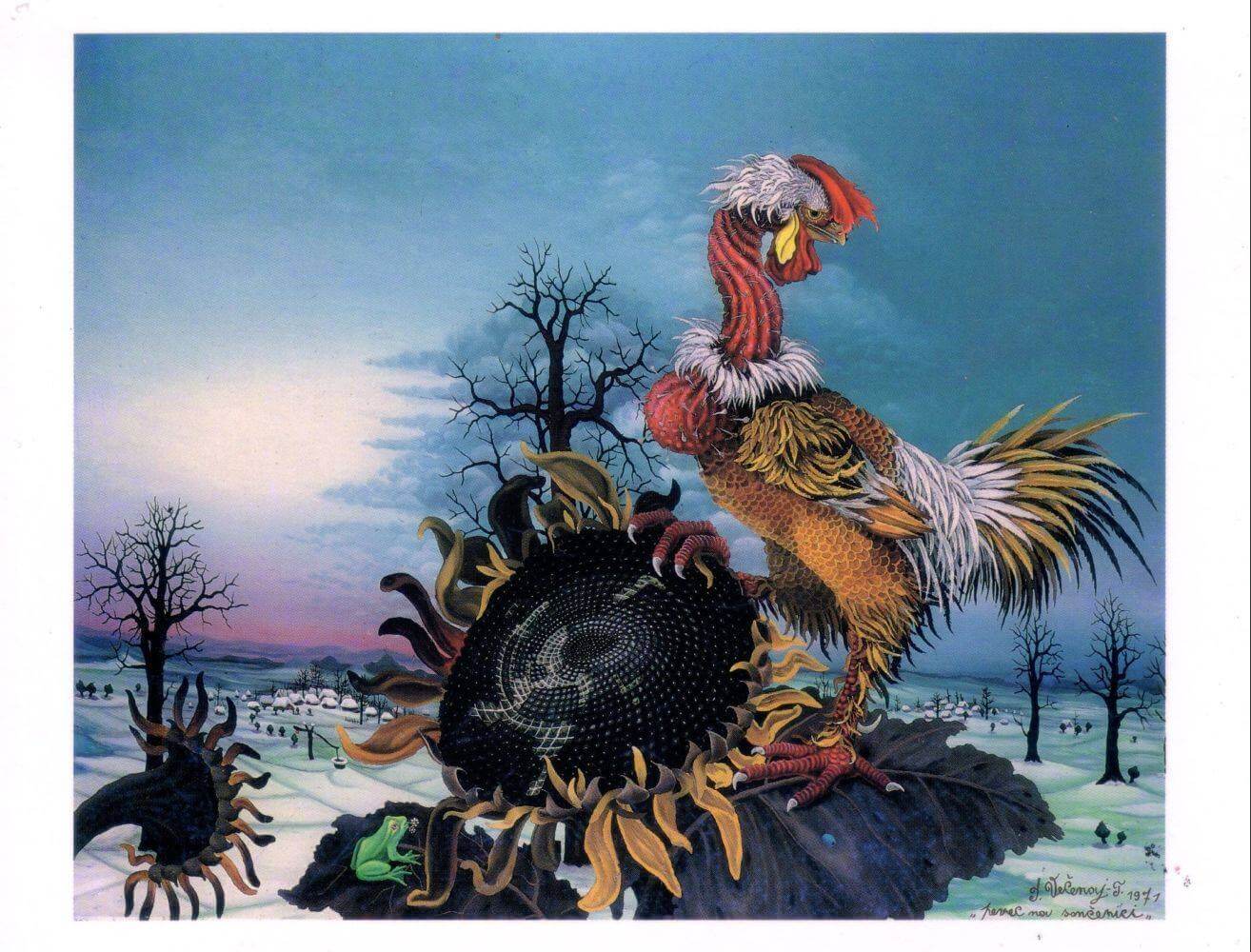 Rooster on Sunflower by Ivan Večenaj © Galerija Ivan Večenaj
Rooster on Sunflower by Ivan Večenaj © Galerija Ivan Večenaj
Perhaps to their surprise, the painters of Hlebine School first generation became a big hit. Exhibitions of their work were appreciated first in Zagreb. But, then the exhibitions began to tour across Yugoslavia and eventually the art capitals of the world. This attention would help inspire a new generation of artists from Hlebine and the surrounding area.
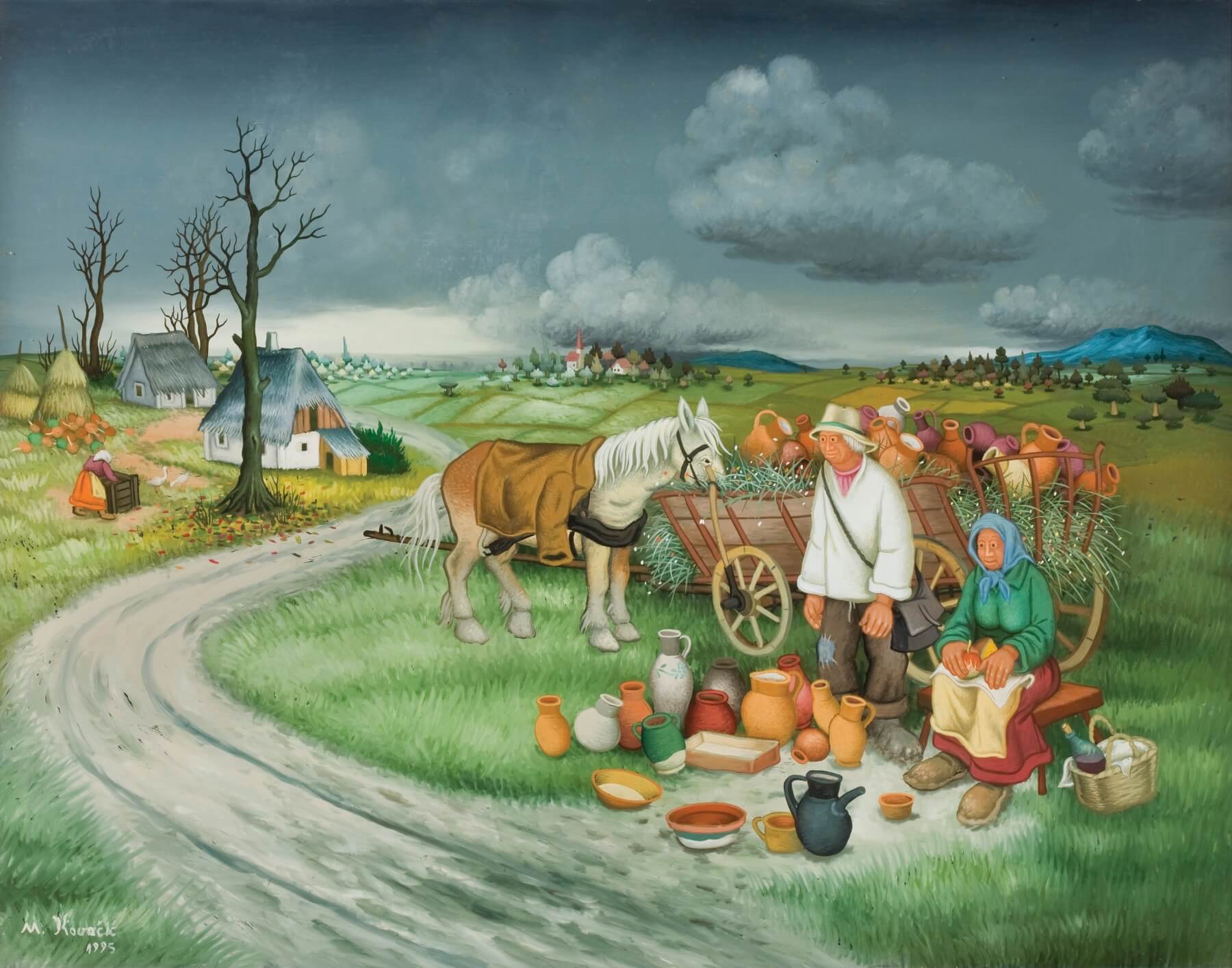 'Lončari' by Mijo Kovačić at Galerija Mijo Kovačić © Koprivnica Town Museum
'Lončari' by Mijo Kovačić at Galerija Mijo Kovačić © Koprivnica Town Museum
Success for the Hlebine School artists showed that Croatian art and self-expression were valid and valued even if unstudied. Thereafter, the tiny village of Hlebine would never look the same. More and more Naive Artists and folk artists were inspired to create. Still to this day, many continue.
While some Hlebine School artists carried on the tradition of painting on glass, others were inspired to sculpt in wood or, like Mirko Virius, paint on canvas. One of the key distinctions between later generations of the Hlebine School and the first is the subject matter.
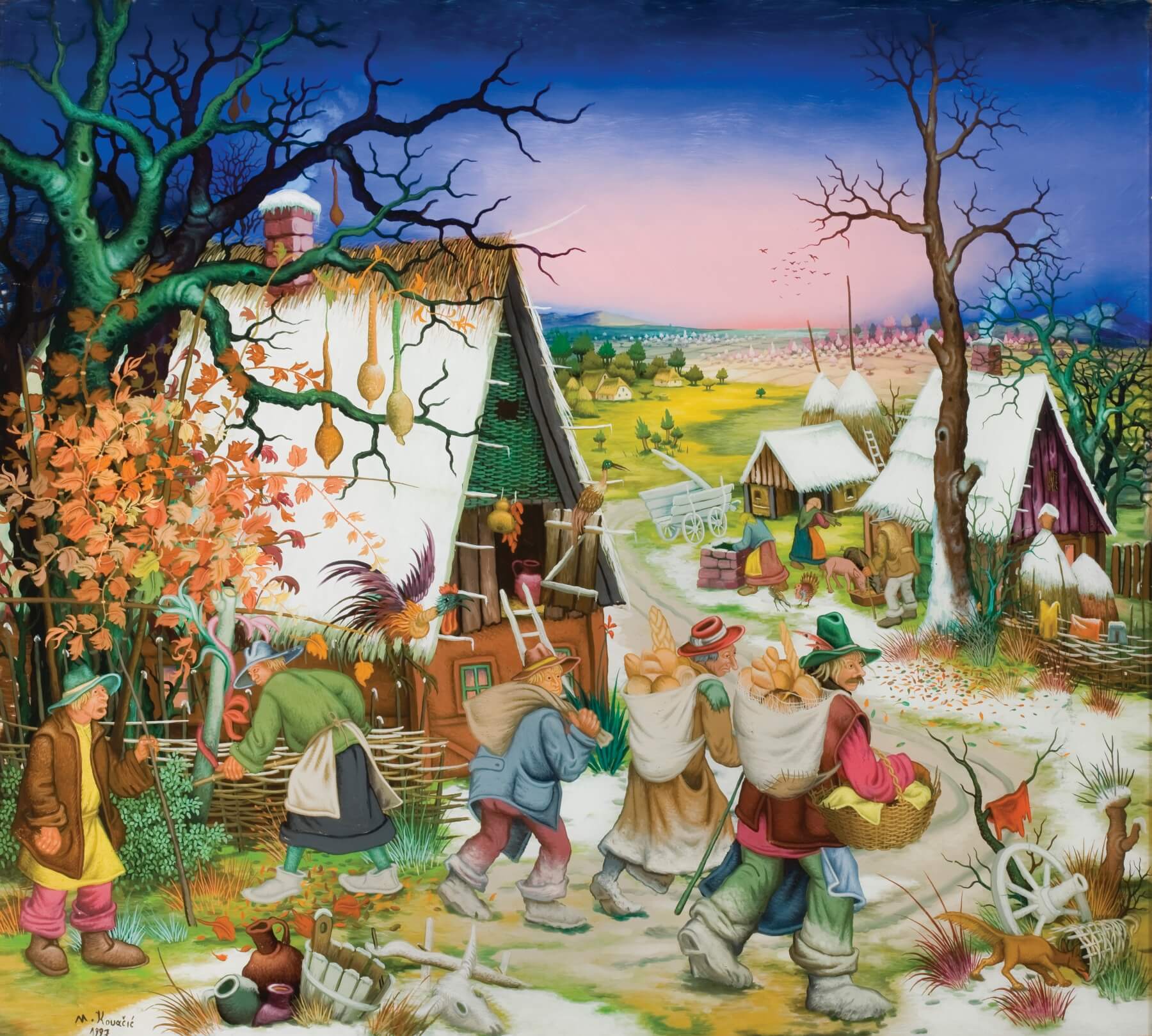 Podravina bread sellers in a picture hanging at Galerija Mijo Kovačić © Koprivnica Town Museum
Podravina bread sellers in a picture hanging at Galerija Mijo Kovačić © Koprivnica Town Museum
Second and then third generation Hlebine School artists were inspired to paint folklore, fantasy, from imagination, and with symbolic uses of vivid colur. This broadening of the style was partially the influence of Dimitrije Bašičević Mangelos, the first curator of the Gallery of Primitive Art in Zagreb (today Croatian Museum of Naïve Art). Subsequently, many of these later works would not fit within the paradigms of the Earth Group.
 'Žabe (Frogs)' by Ivan Večenaj © Galerija Ivan Večenaj
'Žabe (Frogs)' by Ivan Večenaj © Galerija Ivan Večenaj
For example, some of Ivan Večenaj's sacral paintings clearly come from the author's imagination and not his actual vision. Similarly, Josip Generalić, son of Ivan, travelled far beyond the limits of his home village in pursuit of his socio-political subject matter. Both artists were concerned with environmental issues on a global, not just a local level. Although, their work is still inextricably linked to their locale; Večenaj works the Podravina rooster emblem into many of his paintings and even depicts Christ within a Podravina landscape. So too does Josip Generalić when he paints The Beatles and others from the 60s counterculture movement.
On the Trail of the Hlebine School in Podravina & Prigorje, Home of the Treasures of Croatian Naive Art
 Locals return from mushroom picking in autumnal Podravina in a picture hanging at Galerija Mijo Kovačić © Koprivnica Town Museum
Locals return from mushroom picking in autumnal Podravina in a picture hanging at Galerija Mijo Kovačić © Koprivnica Town Museum
Some Croatian Naive Art is held in private and public collections across the world. Some of it finds a home in the National Museum of Naive Art in Zagreb. However, the vast majority of treasures from the Hlebine School of Croatian Naive Art remain in Podravina & Prigorje. The national Museum of Naive Art in Zagreb is currently closed as it undergoes the lengthy process of changing address. As a result, the following addresses in Koprivnica-Križevci County are currently the best places to see the most authentically Croatian of all the country's art.
Also, because the landscape of Hlebine, Koprivnica and wider Podravina appears in so much Hlebine School art, you genuinely need to come here to view both together. You'll get a much better understanding and appreciation of this art when you see it in its natural surroundings.
Galerija Mijo Kovačić, Koprivnica Town Museum, Koprivnica
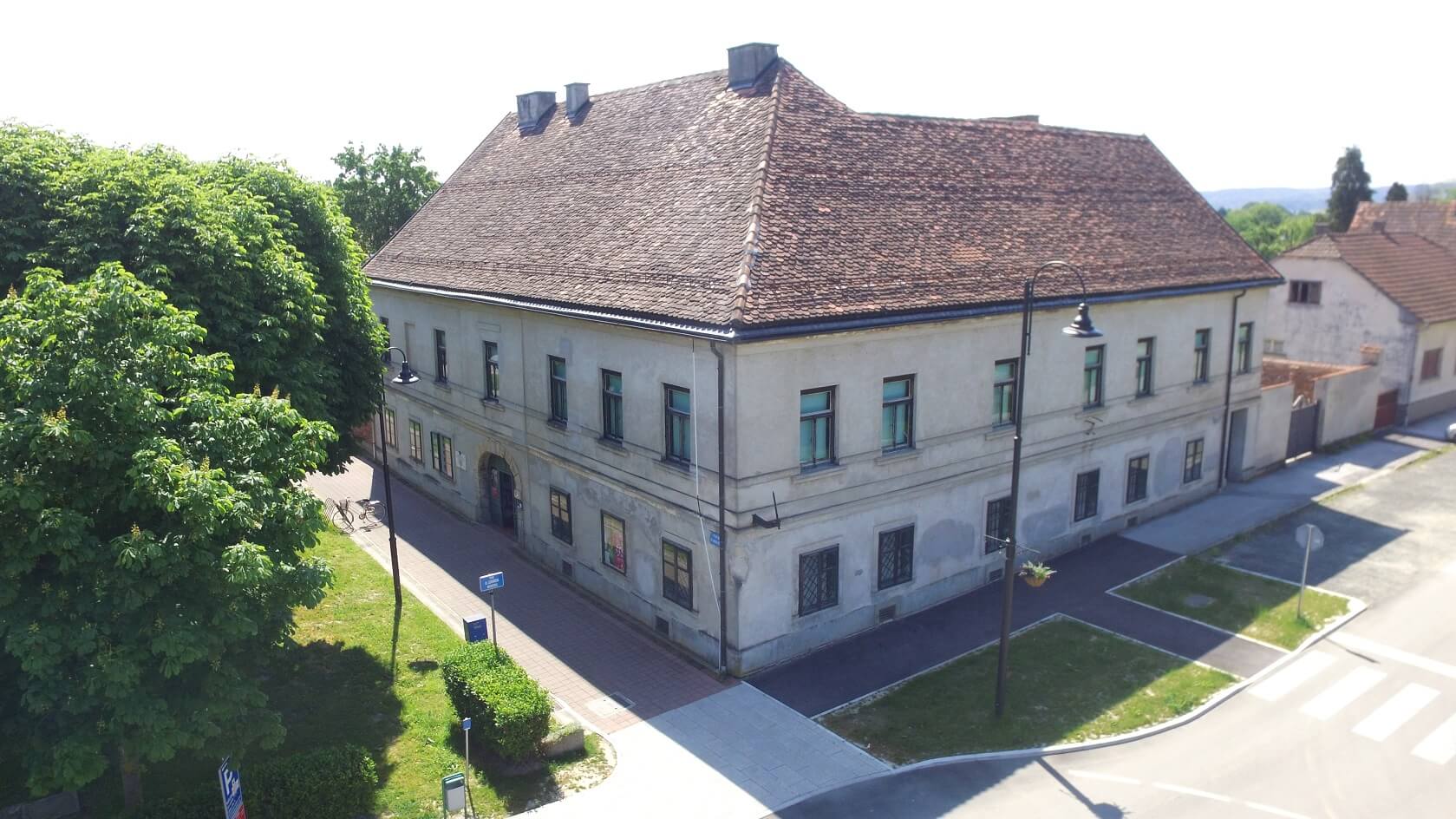 Koprivnica Town Museum © Koprivnica Town Museum
Koprivnica Town Museum © Koprivnica Town Museum
Born 5 August 1935 in Gornja Šuma, Molve, Podravina, Mijo Kovačić is one of the last remaining Croatian Naive Artists of the Hlebine School's second generation. He still paints today, albeit not quite as prolifically as in the past. He has produced such a body of work that not only can you find him exhibited in Croatian Museum of Naïve Art in Zagreb, but also in dedicated Mijo Kovačić galleries in Zagreb and Koprivnica. The one is run by Koprivnica Town Museum, which you can see above. Find out more about the gallery here.
 'Portrait' hanging at Galerija Mijo Kovačić © Koprivnica Town Museum
'Portrait' hanging at Galerija Mijo Kovačić © Koprivnica Town Museum
Galerija naivne umjetnosti (Gallery of Naive Art), Hlebine
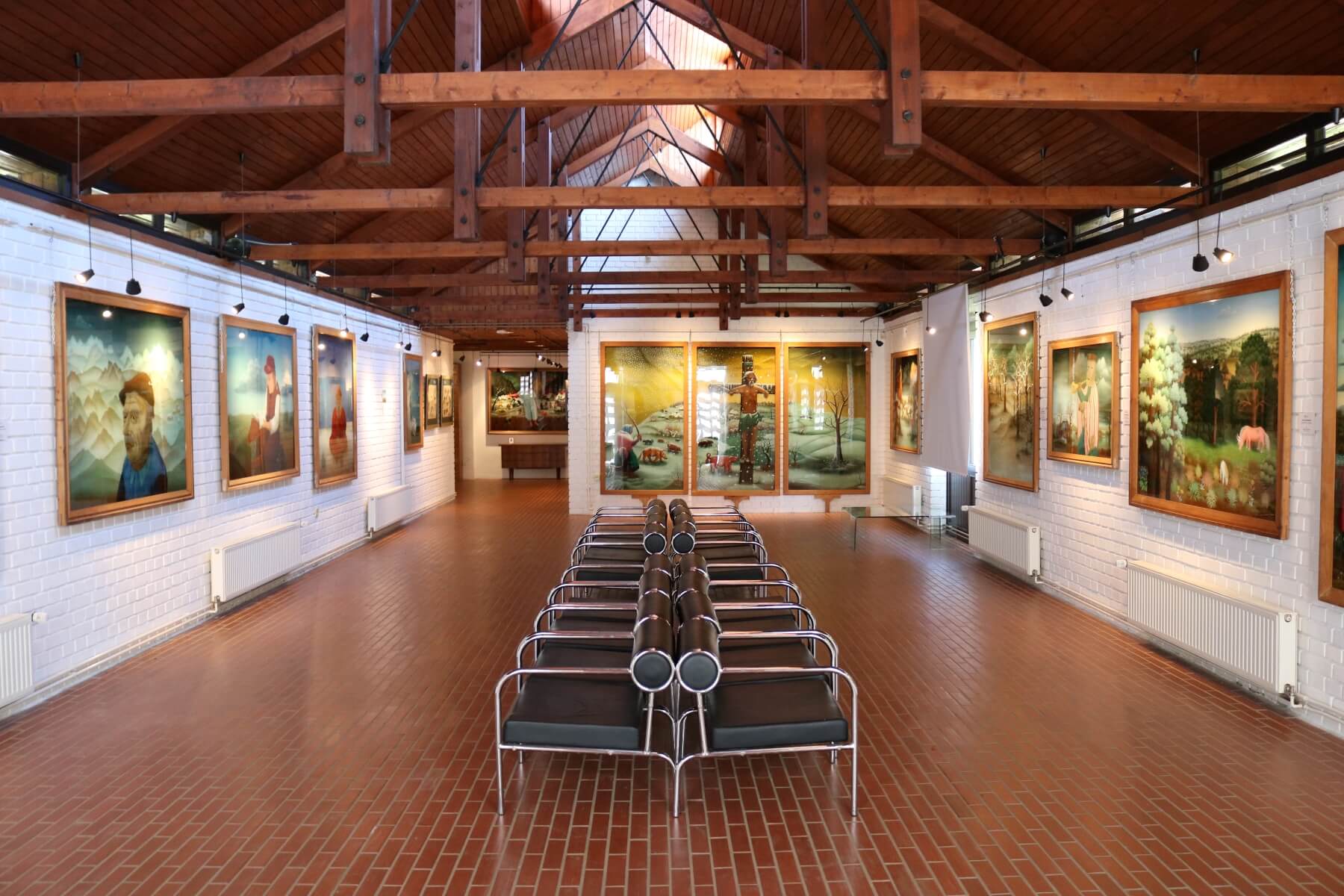
Founded in 1968, the Gallery of Naive Art in Hlebine is one of the top two most important galleries for Naïve Art in Croatia, the other being the Croatian Museum of Naïve Art in Zagreb. But, unlike their Zagreb counterpart, this gallery concentrates specifically on the Hlebine School and locally produced art. A crowd of sculpted wooden figures greets you on the front lawn. Inside, beneath the wooden beams of a beautiful building designed specifically for this purpose, some of the best artists and paintings of the Hlebine School.
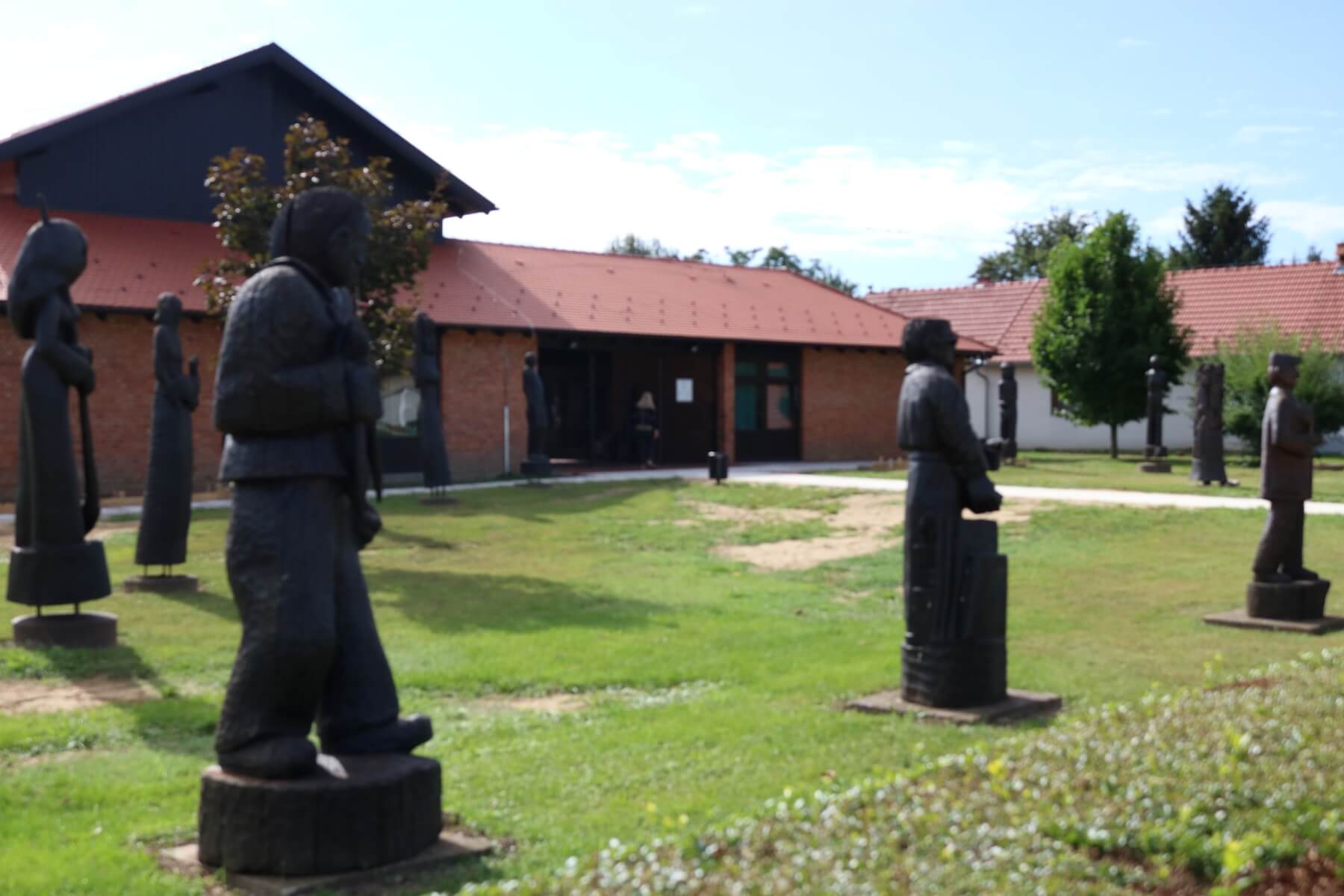
In the mid-1980s, when he was the most famous of all Croatian Naive Artists, neighbour Ivan Generalić paid the gallery a visit. He offered to pay for an extension to the gallery, on condition that it be used to house a permanent exhibition of his work. It was a win-win for the museum and Ivan Generalić subsequently donated some of his true masterpieces for the collection.
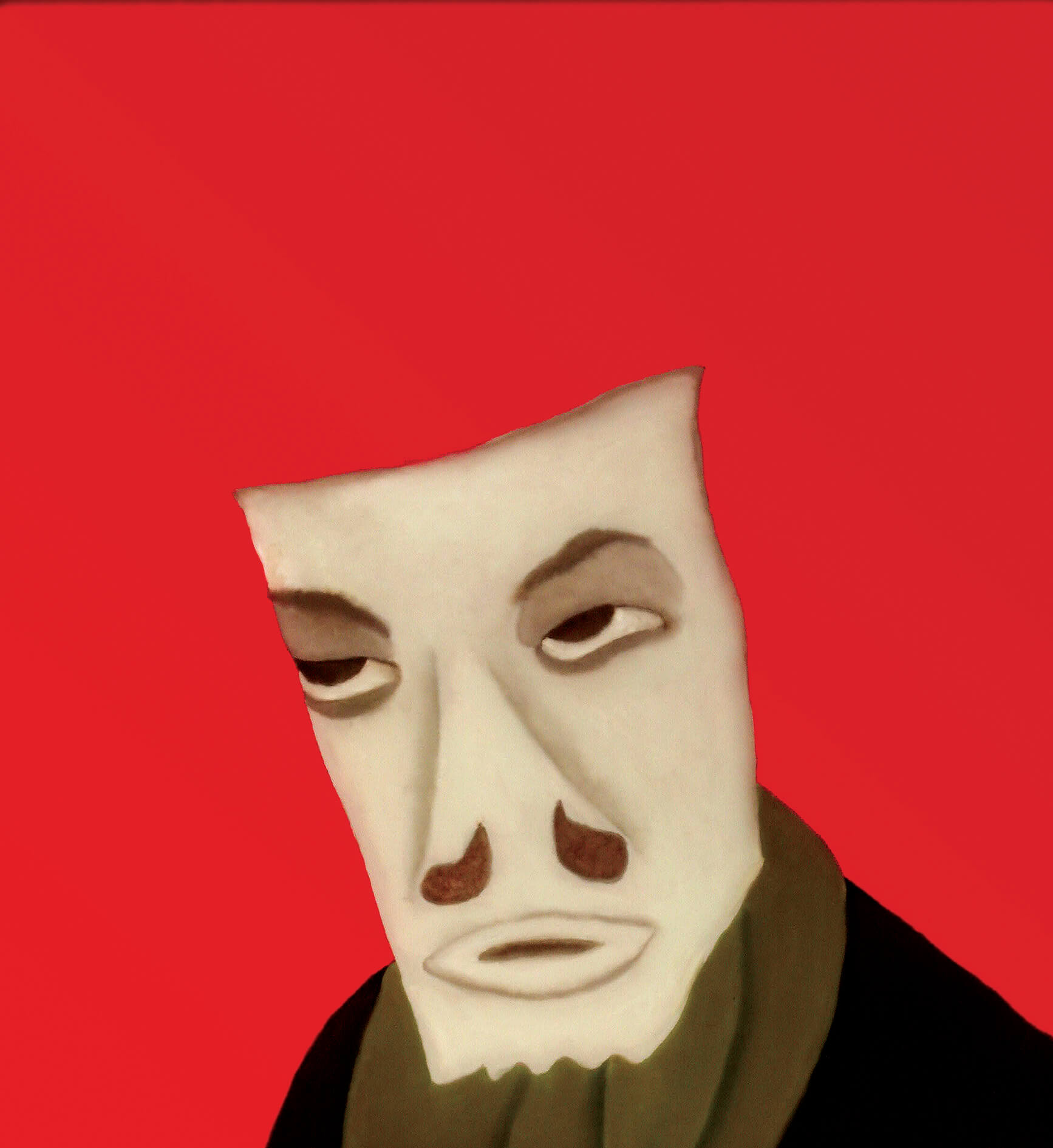
The newer part of the gallery is so true to the original design that, unless informed, you'd never guess it was built later. You'll find works by every key member of the Hlebine School here, including Ivan Generalić, Franjo Mraz and Mirko Virius, Josip Generalić, Ivan Večenaj, Ivan Lacković, Mijo Kovačić, Franjo Filipović and Dragan Gaži. Today, the museum is run by Koprivnica Town Museum. Find out more about the gallery here.
Galerija Josip Generalić, Hlebine
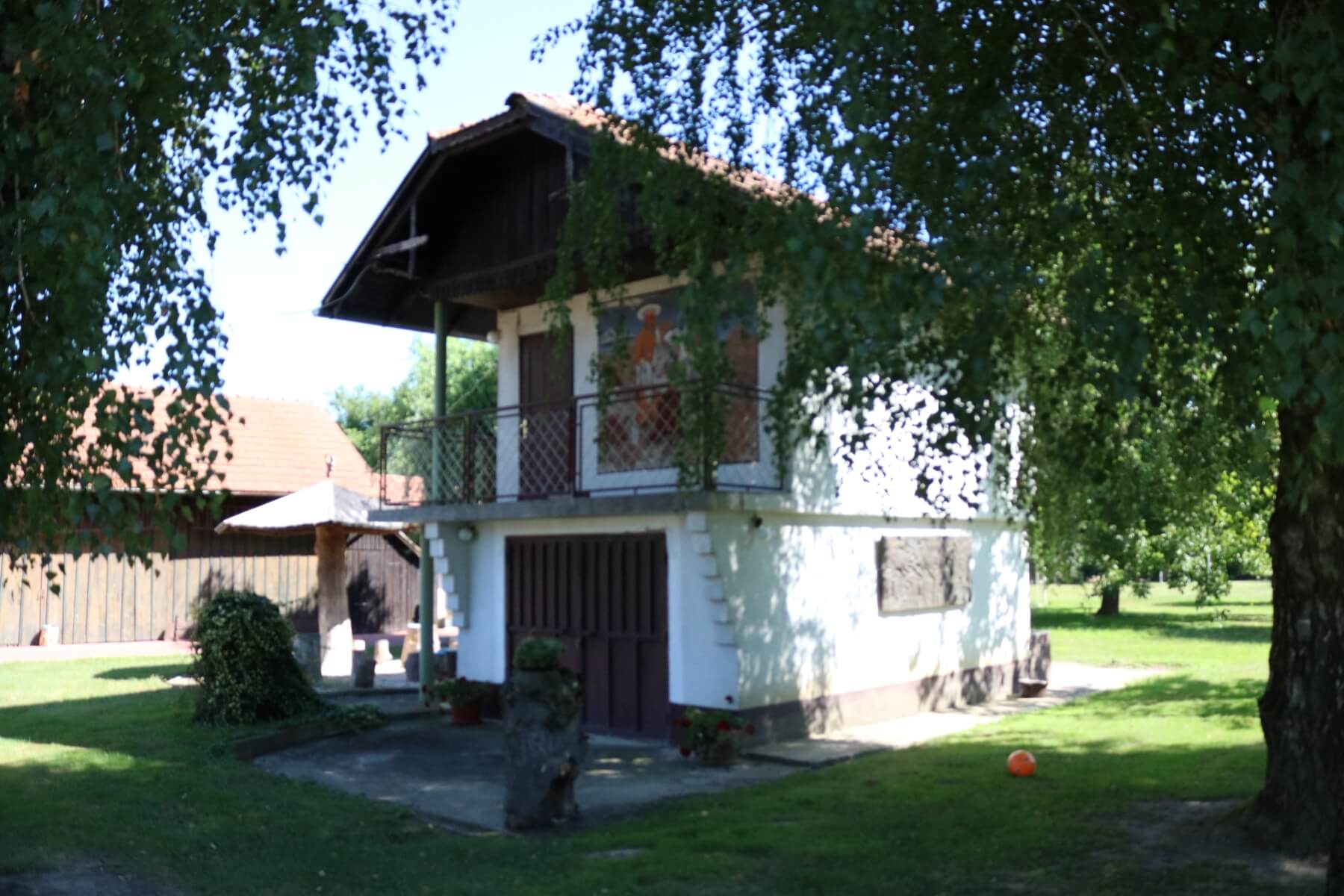
“How long have you got?” asks Ivan Generalić, grandson of Josip Generalić, great-grandson of Ivan Generalić, as he greets you at the Galerija Josip Generalić, Hlebine. He's asking if there's time for the1 hour tour or 6-hour tour. We think he's joking. He's not.
Generalić family have lived here for at least five generations. Having two of the Hlebine School's most famous and most successful painters within their ranks has allowed them to expand their property portfolio. It's just as well, because there's a lot to see here. What was once the simple, semi-agricultural farmstead where Ivan's great grandfather was born is now a sprawling family estate that houses an ethno-museum and considerable gallery spaces filled with incredible exhibits. All of the original furniture from how his great grandfather lived is preserved, displayed as it was, only in an adjoining property the family now own. Alongside the history and many works of Ivan Generalić and Josip Generalić, folk art, sculpture and artisan furniture made by incredible craftsmen from across the Balkans, who the painters once traded with.
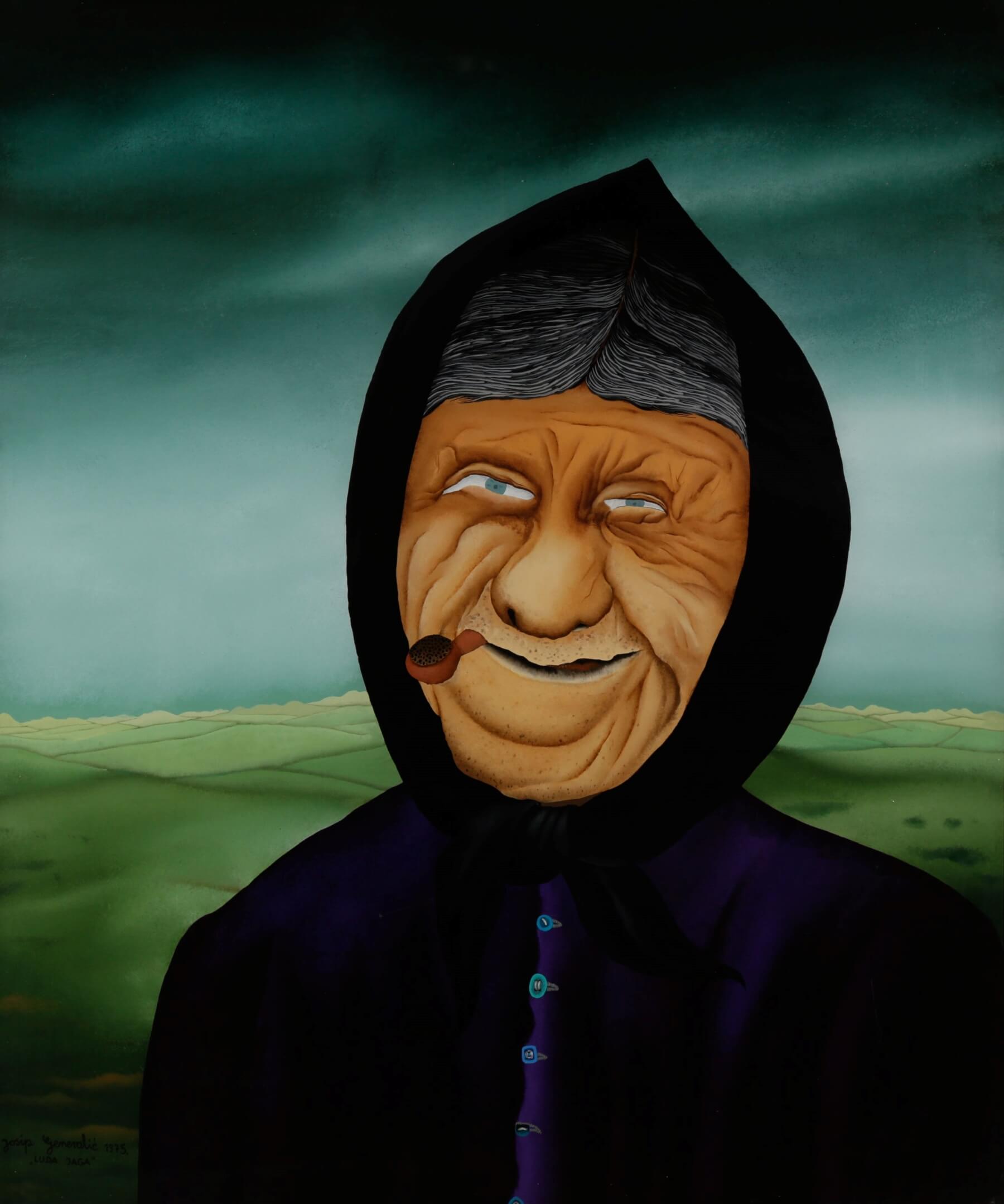 Luda Jaga by Josip Generalić, hanging at the Galerija naivne umjetnosti (Gallery of Naive Art), Hlebine © Koprivnica Town Museum
Luda Jaga by Josip Generalić, hanging at the Galerija naivne umjetnosti (Gallery of Naive Art), Hlebine © Koprivnica Town Museum
If you already like this kind of art, you might have to pinch yourself more than once that you're being shown around by someone called Ivan Generalić. Ivan himself is not only knowledgeable but extremely engaging - there are several big laughs on the tour. Ivan points out one image of an unloved neighbour, who grandfather Josip sent to the moon. He provides him with a Podravina cow so at least he can survive. Perhaps feeling slightly guilty, in the next room, Josip has painted the neighbour's return to earth. Although, he lands nearby in the famously barren Đurđevac desert (sometimes known as the Croatian Sahara). That's quite a lot of time and paint spent on someone you don't like!
Ivan's great grandfather also had a sense of humour. Having grown tired of friends bragging about their holidays in summer houses on the Croatian coast (which he did not like), at the height of his fame he decided to build his own. He invited several friends to accompany him on his holiday. And proceeded to take them to his own back garden, just metres from his main residence, where he had built the summer house. Genuinely, you'll wish you had time for the 6-hour tour. Find out more about the gallery here.
Galerija Ivan Večenaj, Gola
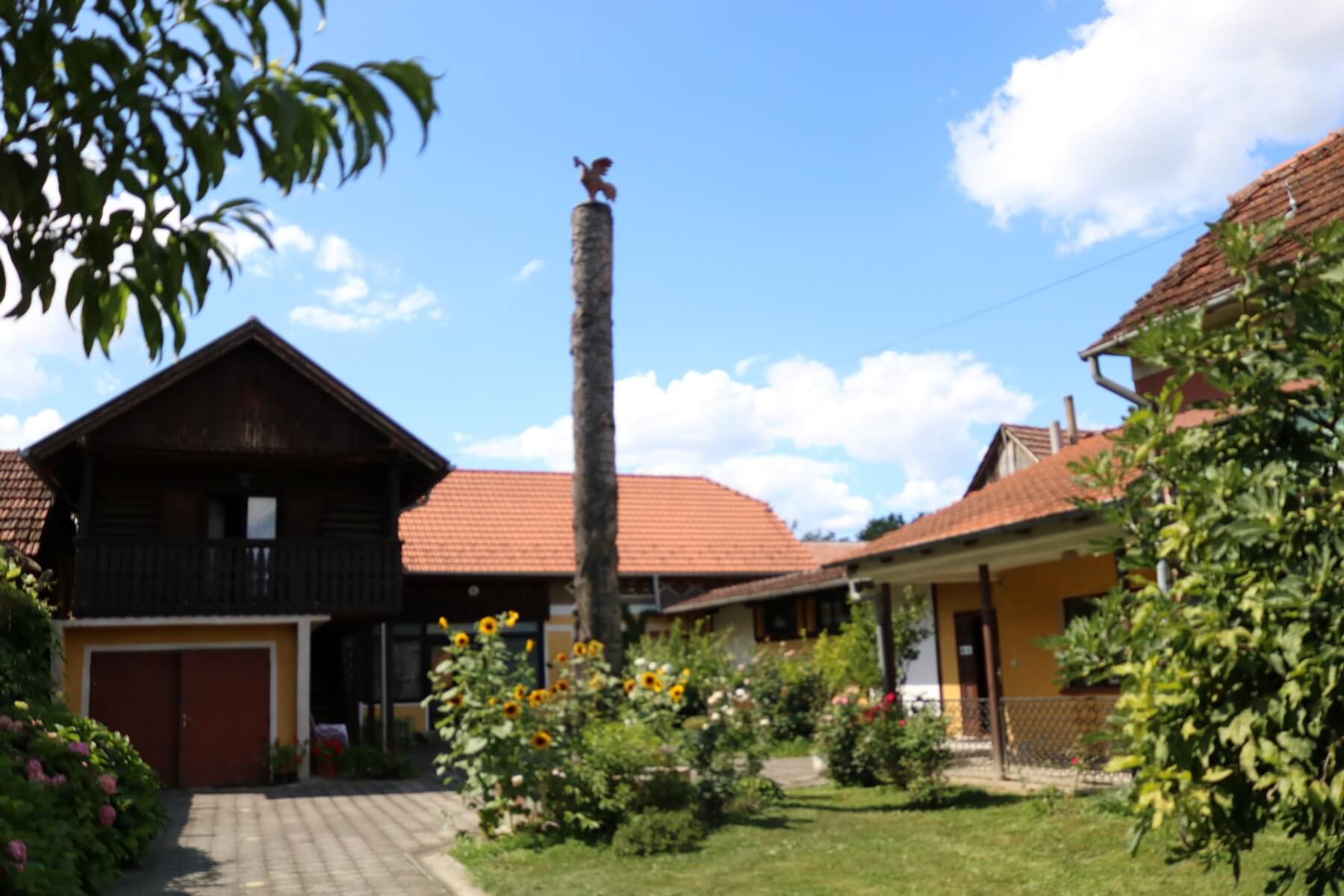
Some of the work by artists from the first and second generation of the Hlebine School are scattered far and wide. But, with the canon of Ivan Večenaj, it's a different story. Truly breathtaking examples of his finest work – definitely among the very best – were reserved by the artist for his family collection. Included in the collection, most of his key sacral works, including Golgotha, a triptych of the life of Jesus, crucifixion and the Four Horsemen of the Apocalypse. Don't worry, it's not all doom and gloom. Beautiful and bright images of Podravina roosters, agriculture and a charming portrait of his wife hang alongside. You can view them all at Večenaj's former home, now Galerija Ivan Večenaj in Gola. Across the road, an ethnic museum preserves life how it once was here. A truly unmissable highlight on the trail of Croatian Naive Art. Find out more about the gallery here.
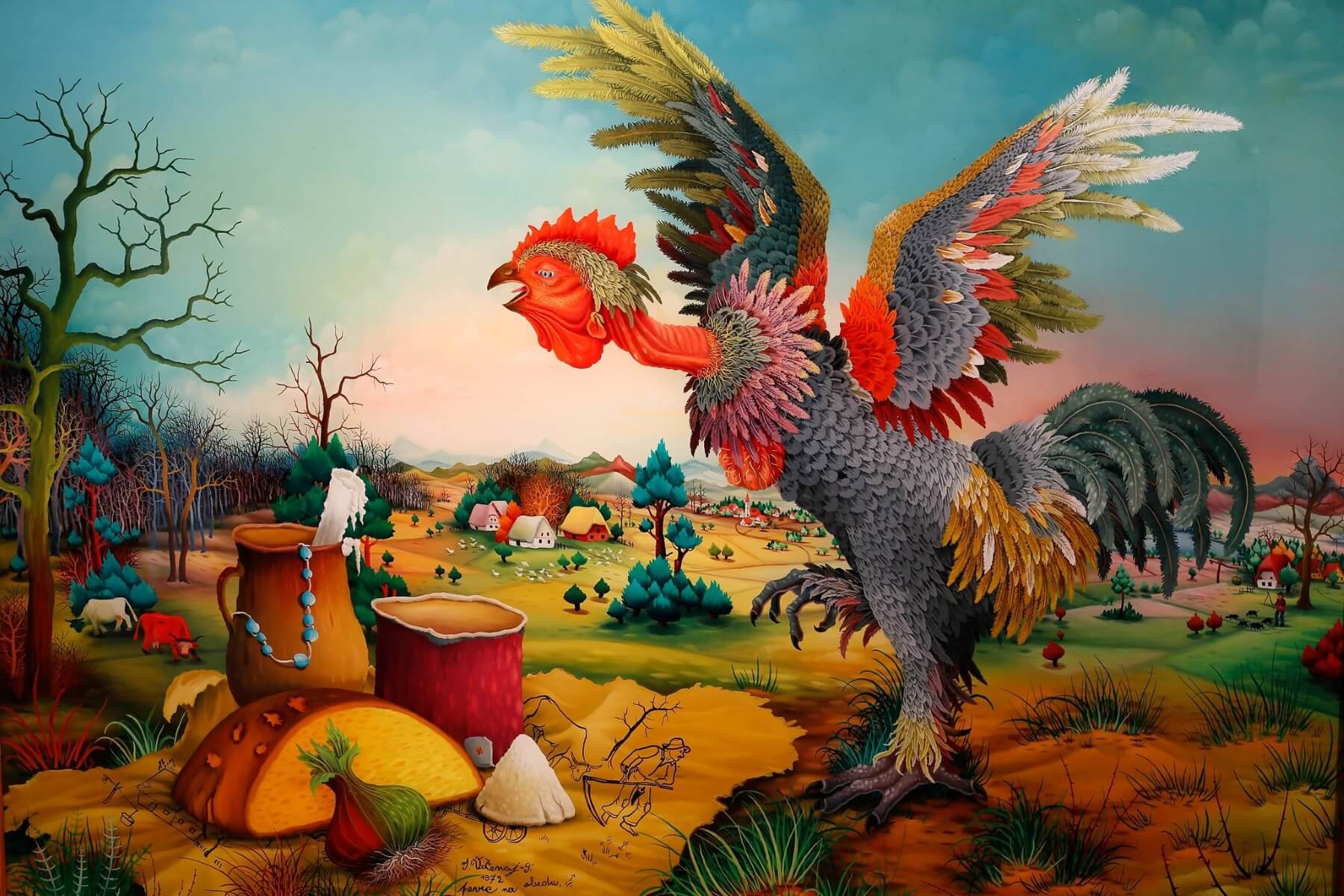 'Pevec na obedu' © Galerija Ivan Večenaj
'Pevec na obedu' © Galerija Ivan Večenaj
Galerija Ivan Lacković, Batinske
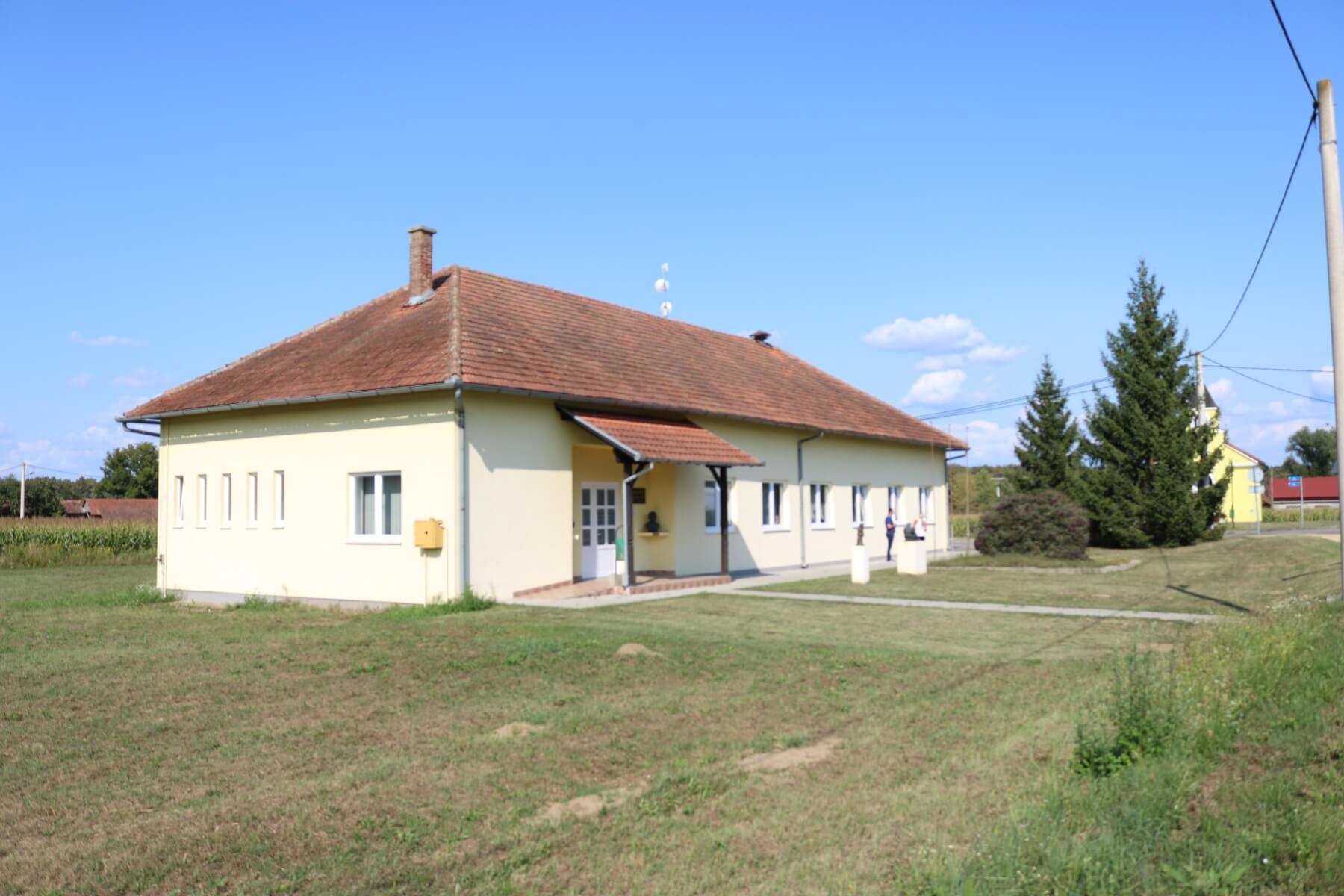
Clearly something of a local patriot, Ivan Lacković donated some 300 works to the village of his birth. Within the collection, you'll find not only works by Lacković himself but also sculptures by Naive Artists Ljubica Marulec and the painter's brother, M. Lacković. Find out more about the gallery here.

Podravina Motifs (Podravski motivi)
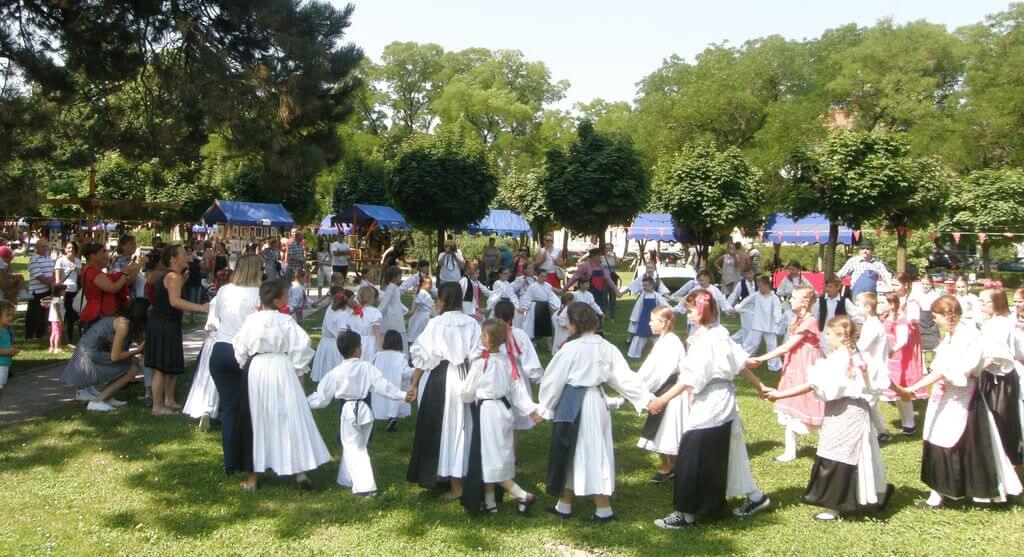 Podravina Motifs (Podravski motivi). Photo © Grad Koprivnica
Podravina Motifs (Podravski motivi). Photo © Grad Koprivnica
A three-decade-old Koprivnica event that showcases all of the cuisine, culture, music, dance, costume and art of Podravina. Naive Art is a key and central theme to the event. Usually, there are over 50 contemporary Naive Artists from the region exhibited, with their work on sale. Taking place each summer, it's a great place to get to know traditional Podravina and to pick up some amazing gifts. Find out more about the event here.
Šetnja kroz naivu u Hlebinama (Walk Through The Naive of Hlebine)
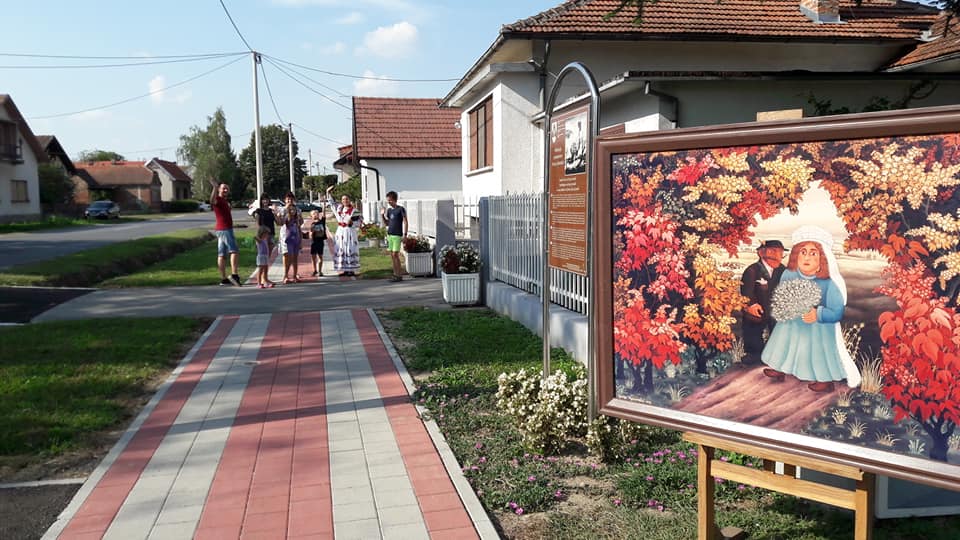 Outside Galerija Josip Generalić during Šetnja kroz naivu u Hlebinama © Tourist Board Central Podravina
Outside Galerija Josip Generalić during Šetnja kroz naivu u Hlebinama © Tourist Board Central Podravina
An annual open-air gallery of Hlebine Naive Art taking place on the streets of the village itself. Organised by Tihomir Želimorski who has the rural accommodation offer Stari zanati in Hlebine, Šetnja kroz naivu u Hlebinama differs from Podravina Motifs because it focusses exclusively on art – painting and sculpture. The houses in Hlebine are treasure troves of Croatian Naive Art. During this summertime event, all village residents bring their paintings and statues out onto the streets, hang them on trees or in gardens. You're invited to walk around the delightful village to look. Find out more about the event here.
This article was produced with the kind help of Koprivnica-Križevci County Tourist Board and checked for accuracy by Koprivnica Town Museum.
If you want to find out the latest from Podravina, be sure to check TCN pages here.
Zagreb Gallery Hosting Exhibition on Yugoslav Monument Art
ZAGREB, 27 Aug 2021 - A travelling exhibition on Yugoslav monument art opened at Zagreb's Miroslav Kraljević Gallery on Thursday.
Entitled "Architecture. Sculpture. Memory. The art of monuments of Yugoslavia 1945–1991", the exhibition, featuring photos of 33 monuments or memorial complexes from the former Yugoslavia, premiered at the Dessa Gallery in Ljubljana, Slovenia, in 2020.
"In the architecture and art of ex-Yugoslavia, the monuments to the victims of the People's Liberation War stand out," the Miroslav Kraljević Gallery said.
The authors of those monuments were renowned Yugoslav architects, urbanists and sculptors such as Bogdan Bogdanović, Edvard Ravnikar, Vojin Bakić, Dušan Džamonja and Zdenko Kolacio.
Instead of the regime's symbolism, their creations combined the present, the past, mystique, geometry, archetypal symbols and new materials, architecture and spatial poetics, the historical aura of locations and new forms of communication with viewers, the gallery said.
"From the perspective of monument art after World War II, Yugoslav monuments are among the most impressive accomplishments."
Before Zagreb, the exhibition was staged in the Istrian town of Novigrad.
The exhibition was conceived and organised by Boštjan Bugarič, Kristina Dešman, Maja Ivanič, Špela Kuhar, Eva Mavsar, Špela Nardoni Kovač and Damjana Zaviršek Hudnik.
The Zagreb exhibition is open until 17 September, after which it moves to Sarajevo, Bosnia and Herzegovina.
For more on lifestyle, CLICK HERE.
Croatian Invasion Video: Meet Cult Swedish Comedy Group Grotesco
Aug 20, 2021 - Have you ever seen the hit Croatian Invasion video? Watch it now and meet the hilarious Grotesco comedy group from Sweden!
Being a small country, Croatia has wanted global recognition since its beginning. This doesn't just refer to the political recognitions and diplomatic relations, but also to make its way into global pop culture. And, of course, hoping it will be in pop culture in a good way, not the Borat way like the country of Kazakhstan.
Back in 2011, the animated American sitcom „Ugly Americans“ (that follow a New York full of demons, zombies, and other magical creatures) made the news in Croatian media with a short clip of one of the characters eating a dead body and saying „My first Croatian, oh it tastes like Serb. “
As evident by comments, while some laughed at the edgy adult humor, many also expressed their dissatisfaction in 24 Sata's comment section, feeling insulted by the clip.
Because America is America, almost anything published there travels globally as media content, but the same can't be said for some other countries.
One such example is Sweden, where back in 2007, the „Croatian Invasion“ sketch was released by the comedy group Grotesco.
Check it out for yourselves.
To be frank, watching the video stunned me before I laughed through tears, although I really had no clue what the video was about. A quick internet search only informed me that Grotesco is a comedy group and that there is no music album to buy from them. But what was the message of the video? How popular is it in Sweden?
In the tradition of Croatians and other Balkan people going to European countries to work and live, Sweden is one of the many preferred destinations.
Early work of the popular comedy group
Vladan Laušević came to Sweden in 2003 as a teen from Bosnia and is today based in Stockholm, mostly working as a social entrepreneur. In 2017, he started writing as a columnist for a social and cultural magazine, Opulens, and his main responsibility later became taking care of the English section Opulens Global. He is also active in Croatian media, occasionally writing for Liberal.hr.
It was in an article Laušević wrote for Liberal.hr about Cuba that revealed one of his contacts sent him the „Croatian Invasion“ video, as comedian Michael Lindgren's experiences in Cuba was the focus of the piece Laušević wanted to present to the Croatian public. „I was not familiar with the video before, but I recognized comedian Michael Lindgren and his humor collective Grotesco. When I moved from Bosnia to Sweden in the early 2000s, I started watching television also to learn Swedish and often was able to see Grotesco since they are a very famous comedy collective“, explained Laušević.
He added that during the 2000s, ads for Absolut Music compact disks (CDs) were viral, so he saw Croatian Invasion as a parody of those ads.
„Also, one must keep in mind that Lindgren and his alter ego Dj Trexx are making fun of Eastern European stereotypes and former communist countries. For me, it was funny to see that "Croatian Invasion" was like a predecessor of Dj Trexx's later videos, such as about Russia and the former Soviet sphere, “Laušević pointed out.
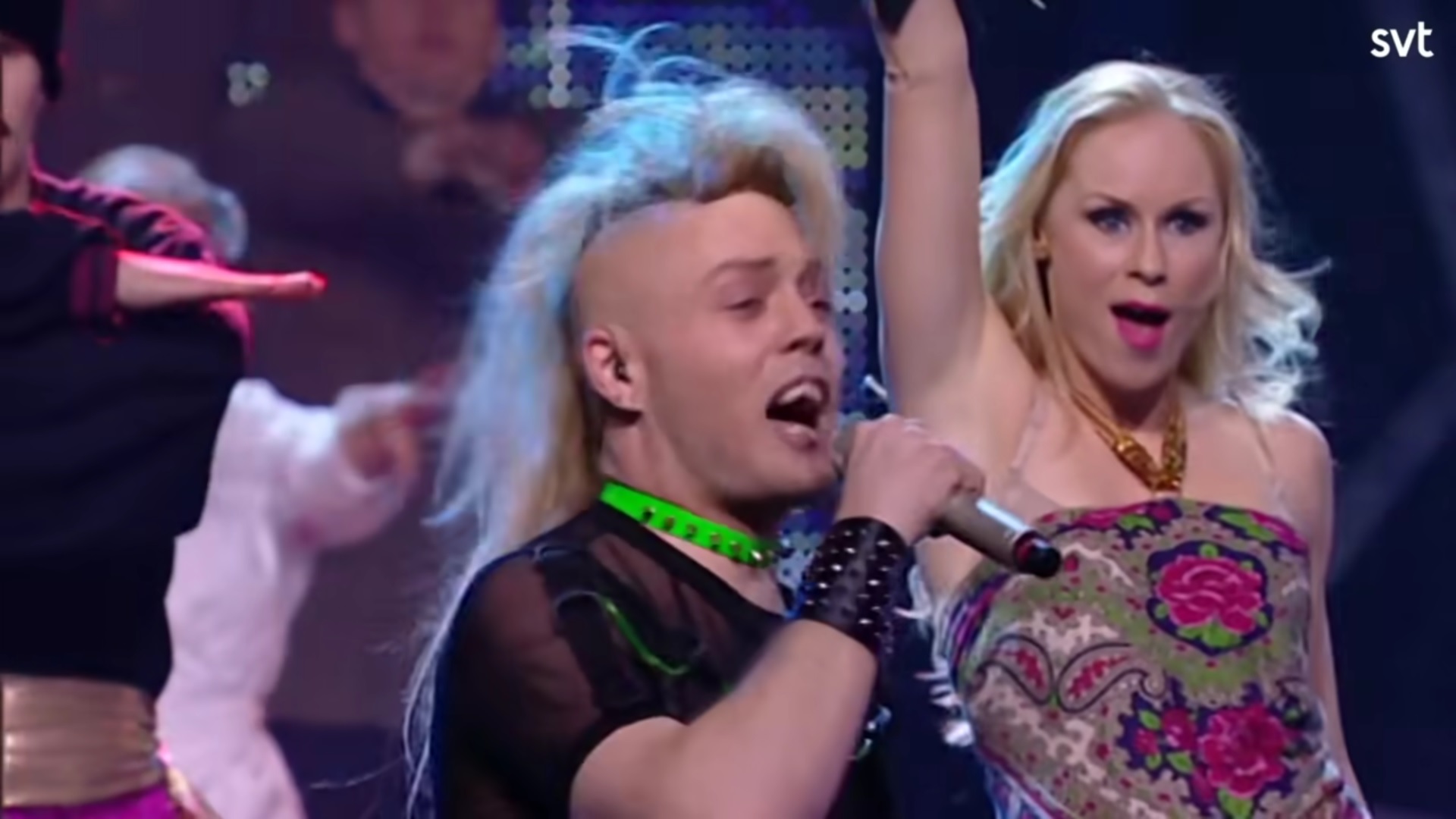
DJ Trexx (Michael Lindgren) in the middle of the performance, screenshot / SVT
Humour in Sweden is well developed on many levels, from stand-up comedy and beyond. Referring to the comedy scene in Sweden, Laušević revealed that the Grotesco collective is mainly based on political parodies. For example, how Sweden dealt with the refugee crisis in 2016 or in real-life situations such as how parents behave during a school meeting.
„So when it comes to the video itself, it is more special because Dj Trexx was specialized in making parodies on stereotypes and cliches about Eastern and former communist Europe. I would not be surprised if Lindgren used to listen to techno music and watch videos from Croatia in the mid-2000s to develop his humor agenda“, concluded Laušević.
He isn't sure how popular or famous the video was during the late 2000s, but today Laušević saw that the video had been mentioned in different chat platforms and forums as one of Dj Trexx's early works.
When it comes to the impact on the impressions of Swedish people about Croatia, the video isn't the trigger for any particular opinions about the country.
„I have only received a few questions about the video from people I know and who are older and remember it from the 2000s, and our discussions were mostly based on cliches and stereotypes regarding former communist countries. I have mostly seen and heard positive stories and experiences from my contacts and others when having spontaneous conversations about Croatia. It mostly has to do with tourism and the seaside because many Swedes love to go to Croatia during summertime. Older generations had positive experiences from vacations when Croatia was a part of Yugoslavia, while younger ones have more experiences with modern Croatia“, described Laušević.
Improvised writing and pure fun
Thanks to Laušević's well-established Swedish contacts, Michael Lindgren, aka Dj Trexx of the Grotesco collective, recalled for TCN how the video was made.
„The original idea for Croatian Invasion was just to let our prejudices about the Eastern European electronic scene run wild. No deeper thoughts. My colleague and I were improvising while writing; I think we were quite drunk“, said Lindgren. „The video was a skit in the first season of our sketch comedy show Grotesco in 2007. The overall reception was good, although it was kind of a cult hit. Our broad breakthrough in Sweden was in 2009 when we made the entertainment part of the Swedish Eurovision competition Melodifestivalen“.
While at the start, DJ Trexx was Croatian, he later turned Russian. Humourous provocation (see the song "Tingaliin") and artistic experimenting lead to the change of the character that continues to explore social solidarity and liberal freedom.
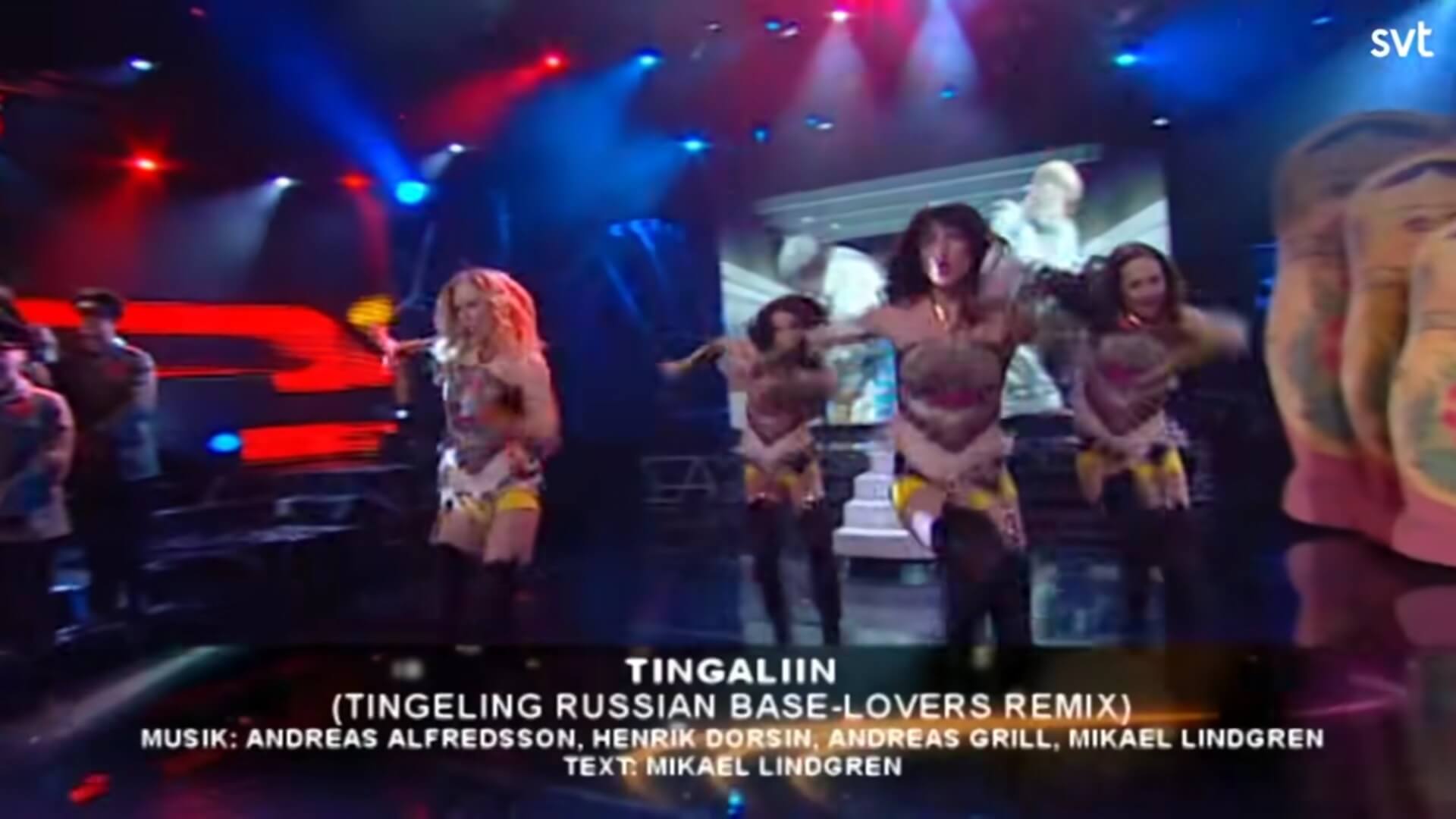
Performance of Tingaliin a parody of Eastern Europe stereotypes at Melodifestivalen 2009, screenshot / SVT
„Trexx evolved from Croatian Invasion. He became defined as Russian-East-German when we did Tingaliin in 2009 (because Russia was hosting Eurovision that year). I think he reflects a part of me that I wanted to experiment with all alter egos. He was born in East Berlin “behind the wall” (son to a red army officer and a German concert violinist), but he loved western electronic techno. Maybe I liked that story because I was a Swede struggling with the ideas of socialist solidarity and safety vs. liberal freedom. Trexx also loves the idea of a free united Europe“, described Lindgren.
Stating how he doesn't know any Swedish-Croatians personally, Lindgren's general impression is good with no particular prejudice.
„Croatian Invasion was just pure fun, not really meant to say anything intellectually - maybe a love-hate tribute to our prejudices about the newly liberated Eastern European techno scene around the 2000s. Also based on the eclectic and, through Scandinavian eyes, over the top and sometimes bizarre acts in Eurovision from the previous Eastern bloc“, concluded Lindgren.
In the end, he hopes he will have a chance to visit Croatia someday, and with Swedes having a positive experience in the country, it would be awesome for the Swedish celebrity to also enjoy the country and perhaps even visit some of the many electronic music festivals Croatia has to offer. Particularly on Pag's Zrće beach.
Learn more about various Croatian destinations on our TC page.
For more about Croatia-Sweden relations, follow TCN's dedicated page.
AEPO-ARTIS: Croatia Making Position of Performing Artists Difficult
ZAGREB, 3 Aug, 2021 - AEPO-ARTIS, a non-profit organisation that represents over 650 performing artists, has sent a letter to the Croatian culture minister criticising Croatia for being late with the adoption of new copyright legislation and missing a deadline for the implementation of two EU directives, the Croatian Musicians Union said on Tuesday.
The organisation said that the implementation of the Copyright Directive and the Directive on online transmissions and retransmissions was being delayed because Croatia was late with the adoption of the new Copyright and Related Rights Act.
The letter, signed by AEPO-ARTIS secretary general Ioan Kaes, says that the COVID-19 pandemic has widened the gap between the growth of profit by online giants and individual artists because the latter do not participate in the fair distribution of this turnover.
The situation is particularly dramatic because in the new business circumstances the turnover of online platforms has become a dominant source of income for the music industry. For over a year and a half, performing artists have been denied their basic source of income - live performances, while at the same time the use and turnover of their recordings increased and performers could not enjoy their rights equally with others. Although their works still reach wide online audiences, artists receive small or no remuneration for them, according to the letter.
The institute of performers' inalienable right to remuneration is not incorporated into the proposal for the new Copyright and Related Rights Act, and under the proposal, record companies would be given an additional three years to adjust their business. This would allow Croatian record companies to continue their unfair and unethical practice of blackmailing performing artists and not paying them for the performances that have been used by online services for years, the letter said.
AEPO-ARTIS concluded by saying that introducing the inalienable right to remuneration, which artists would be able to exercise through their collective management organisations, is the best, if not the only, solution that guarantees that artists receive appropriate and proportionate remuneration for their work.
For more about politics in Croatia, follow TCN's dedicated page.


